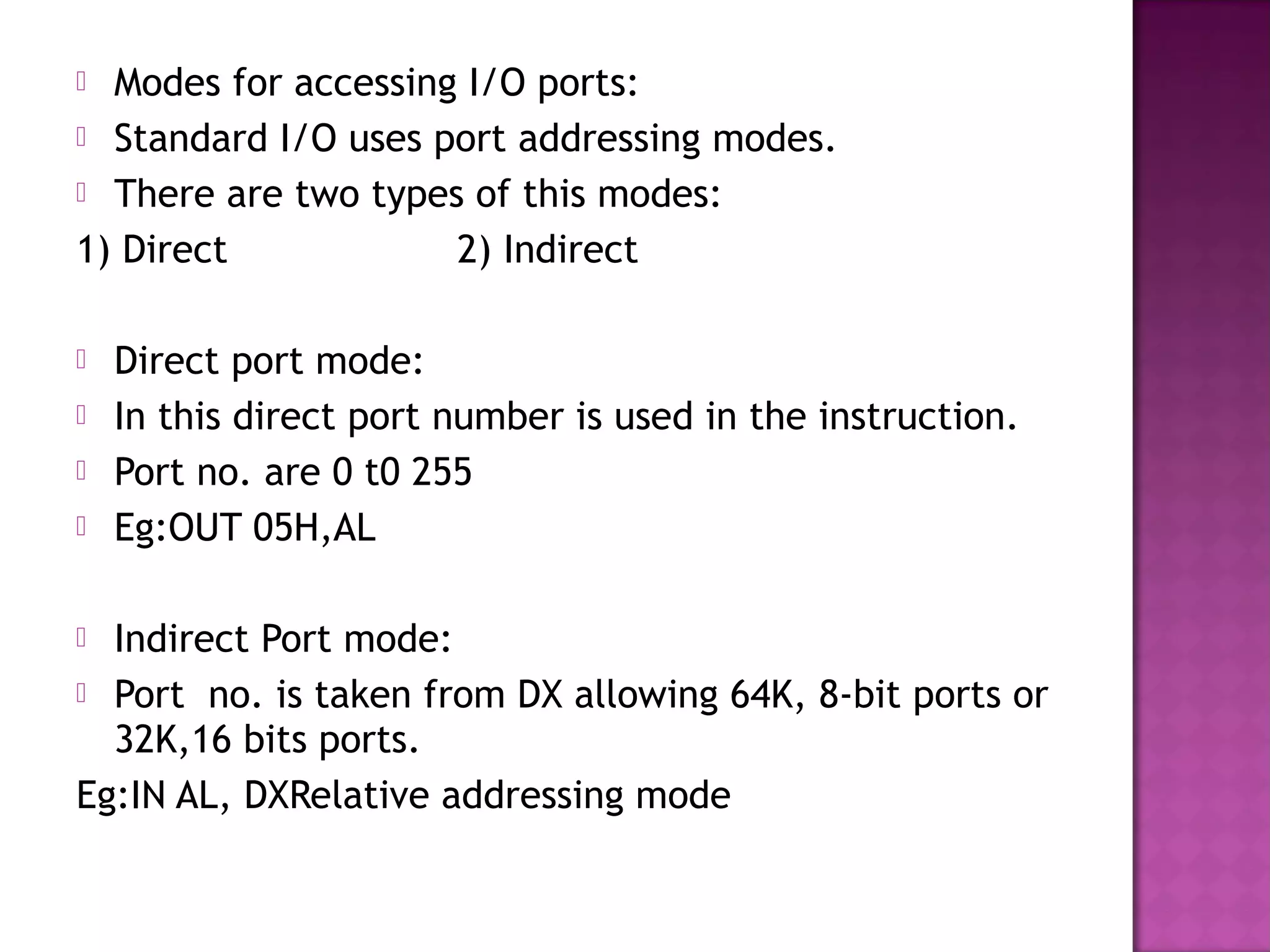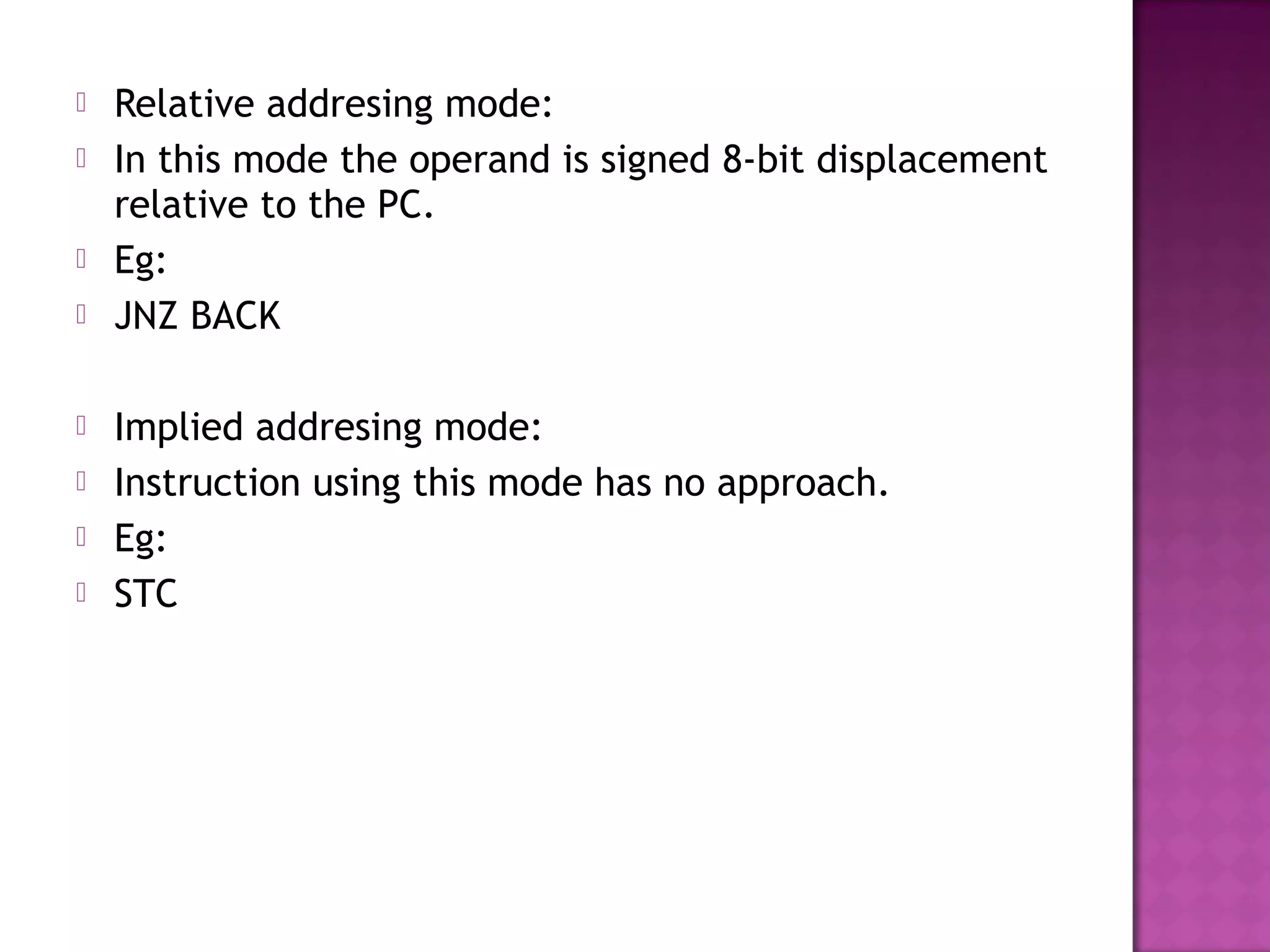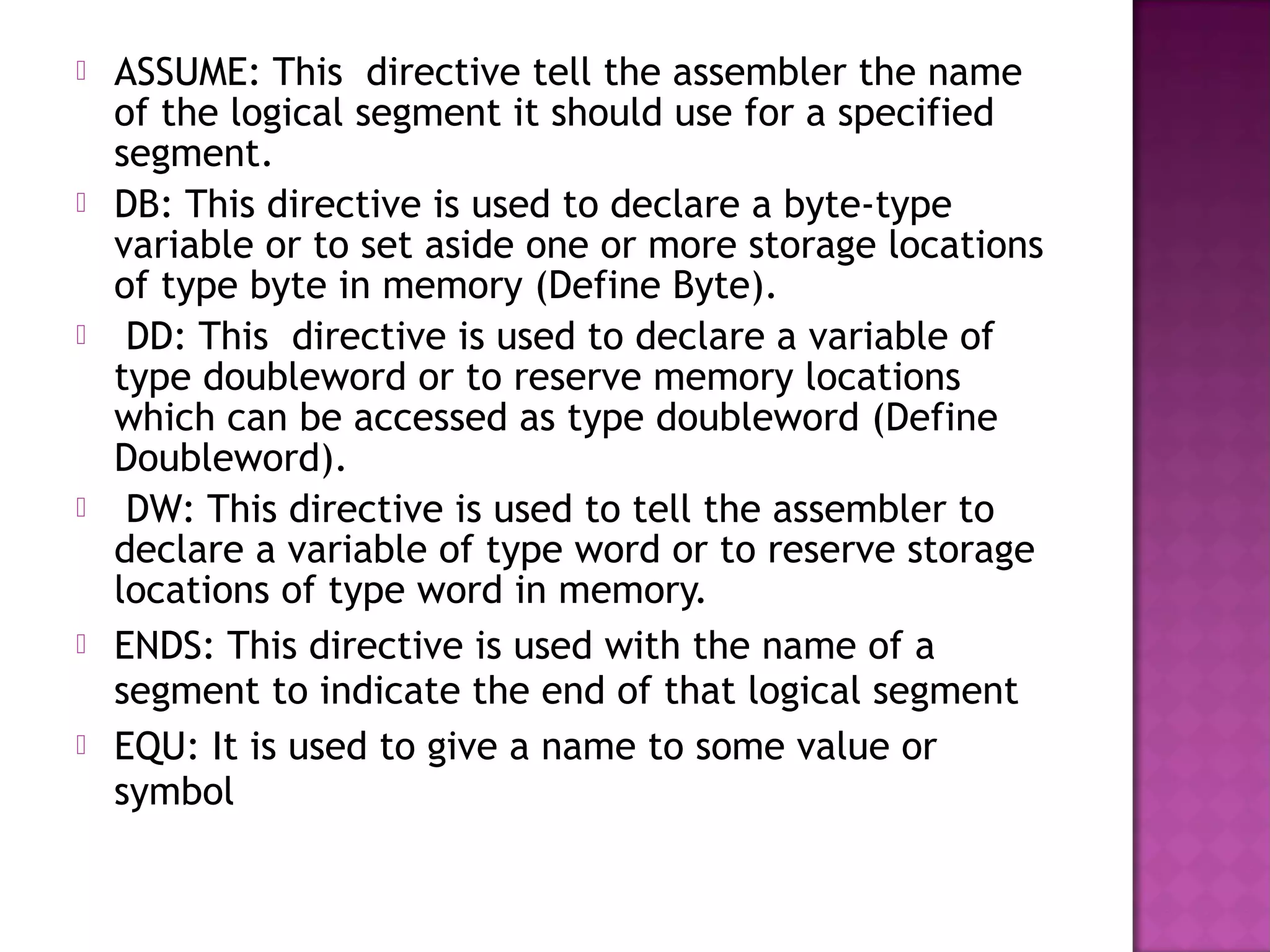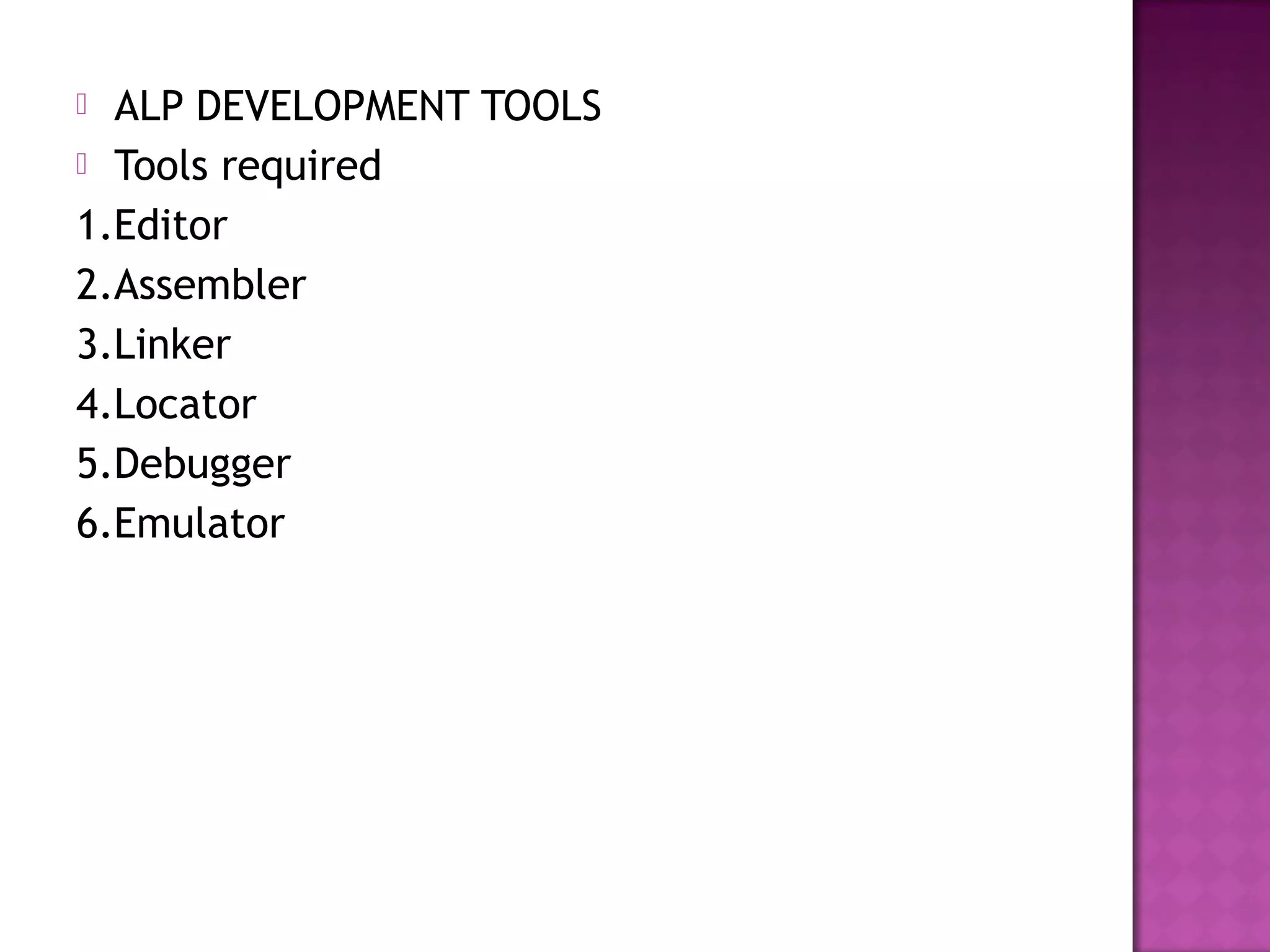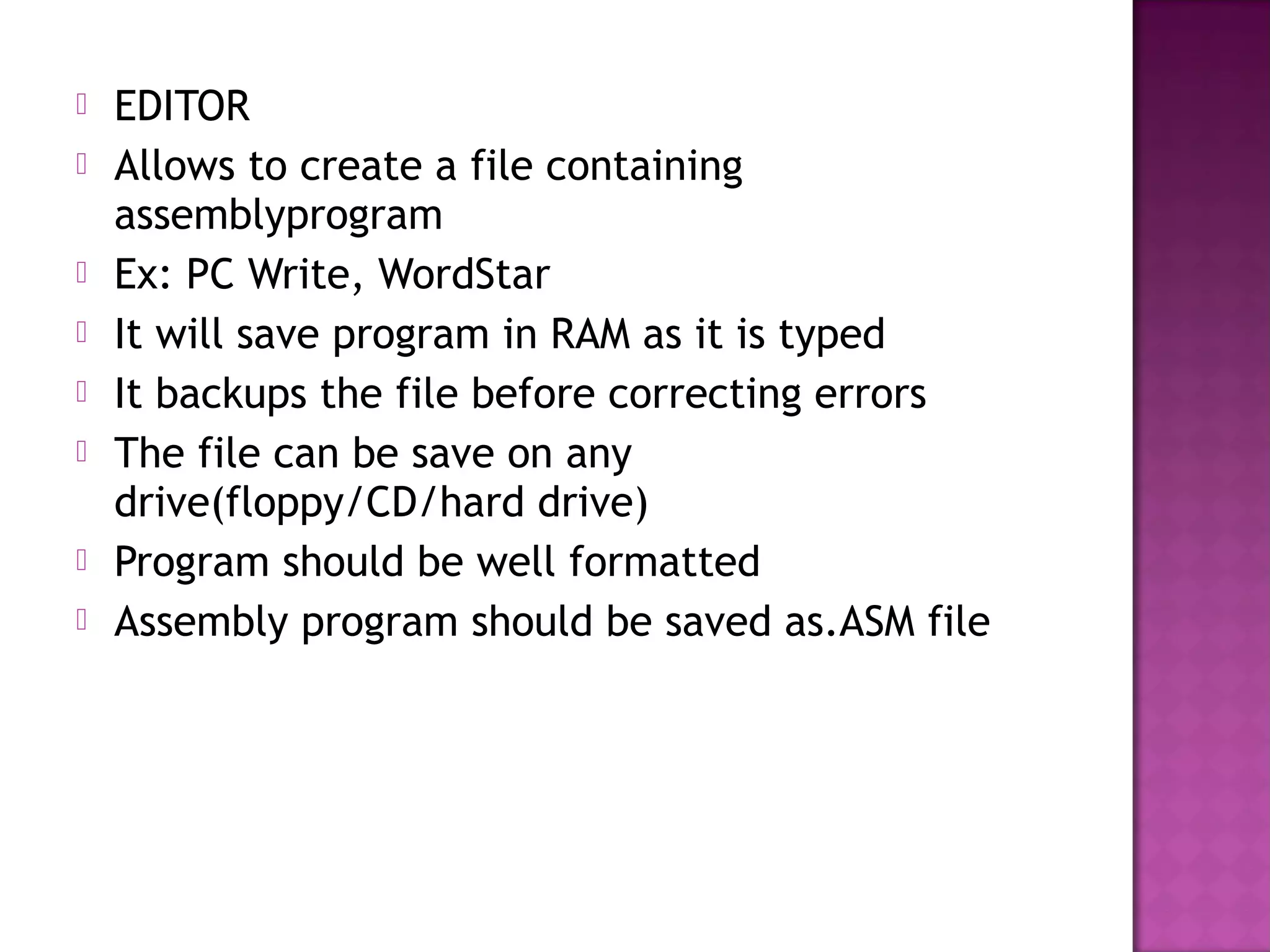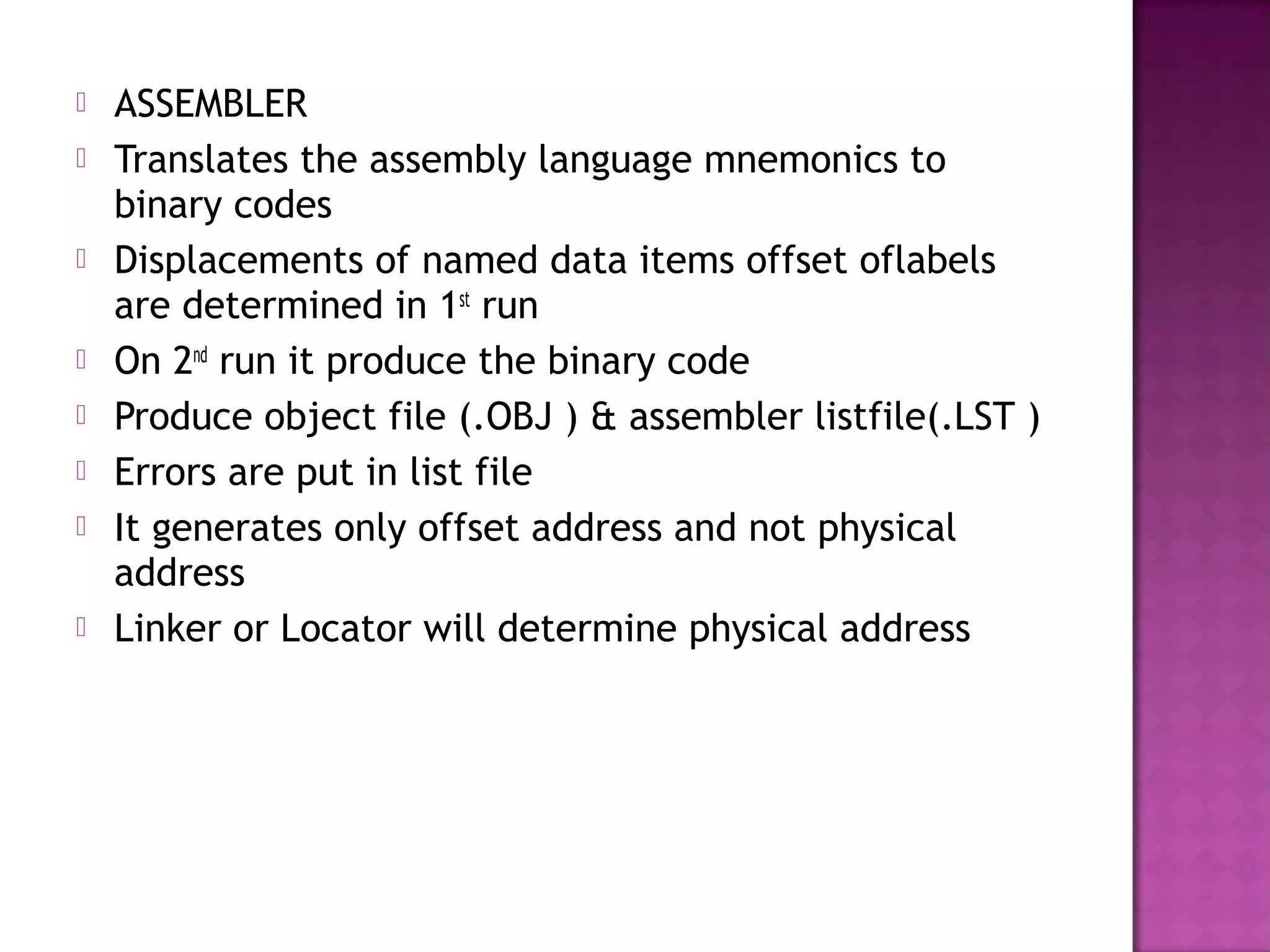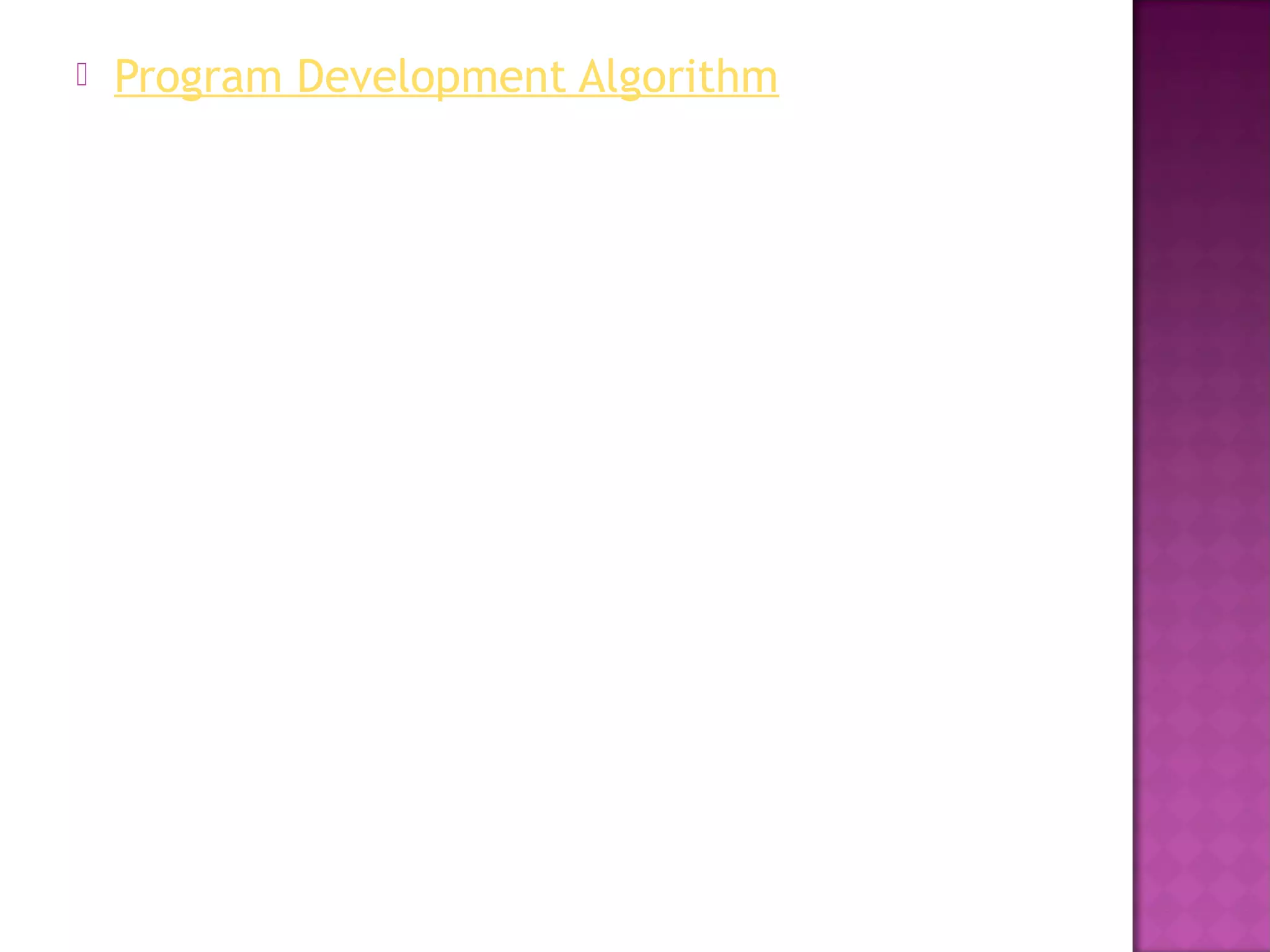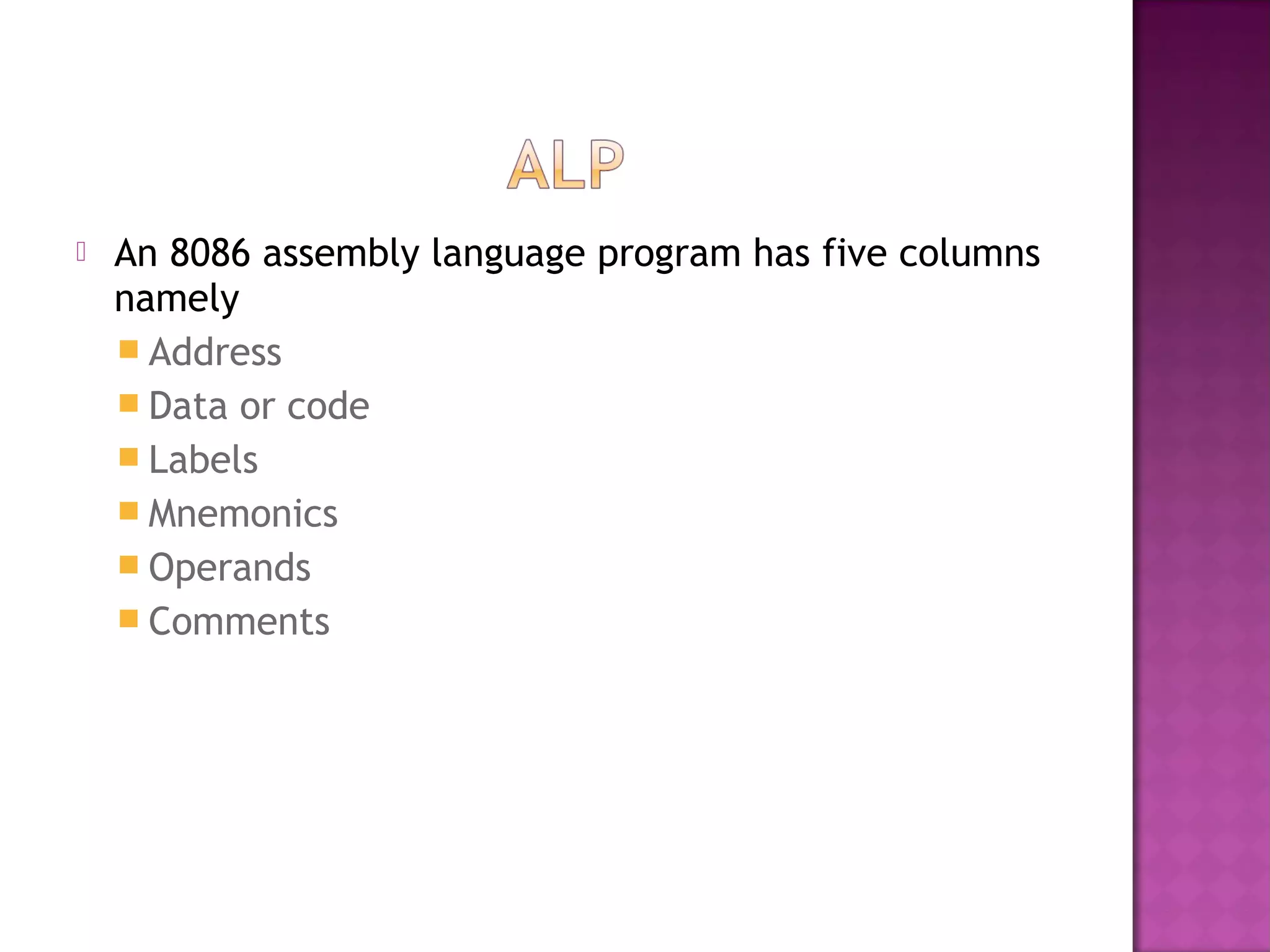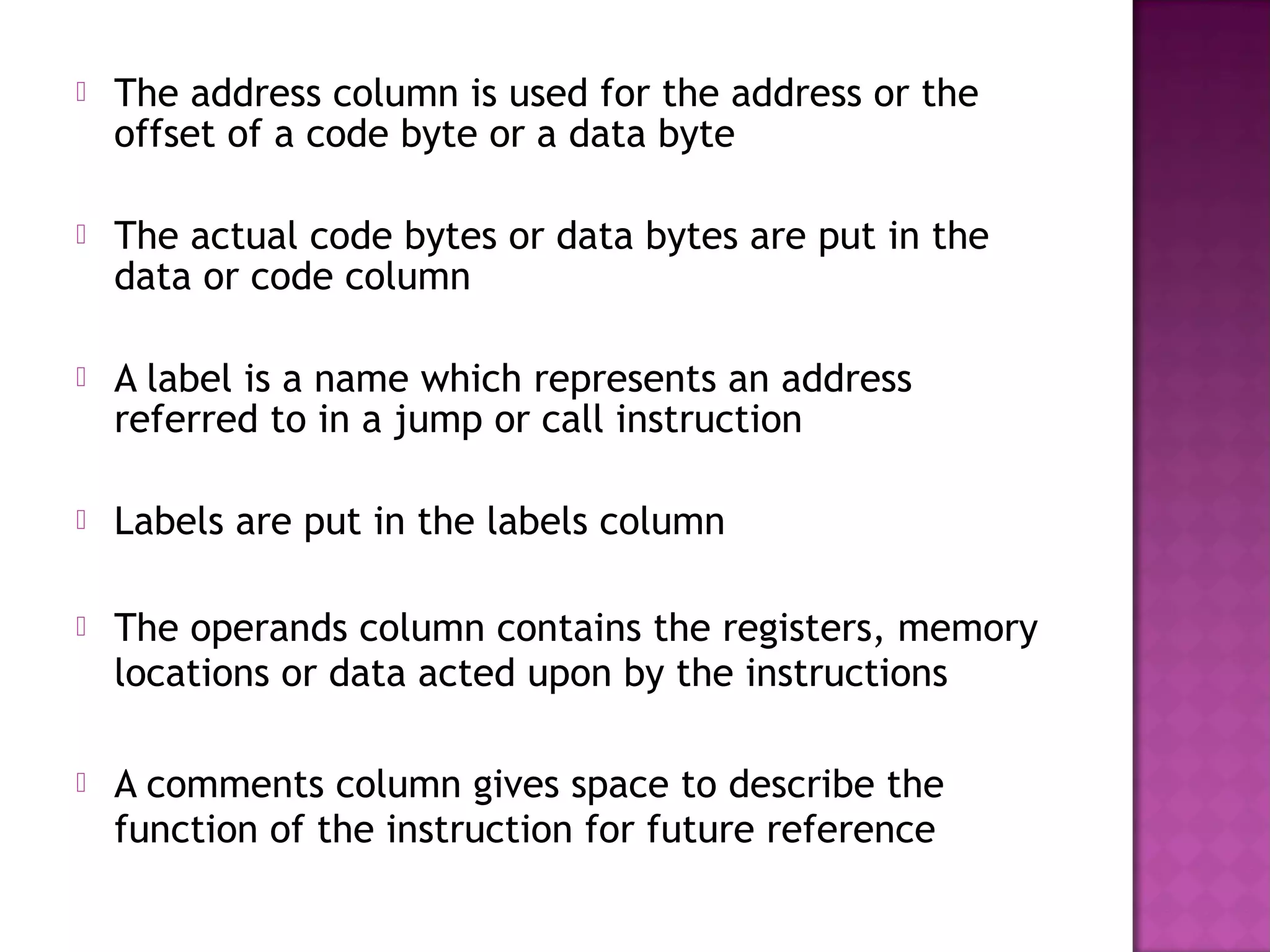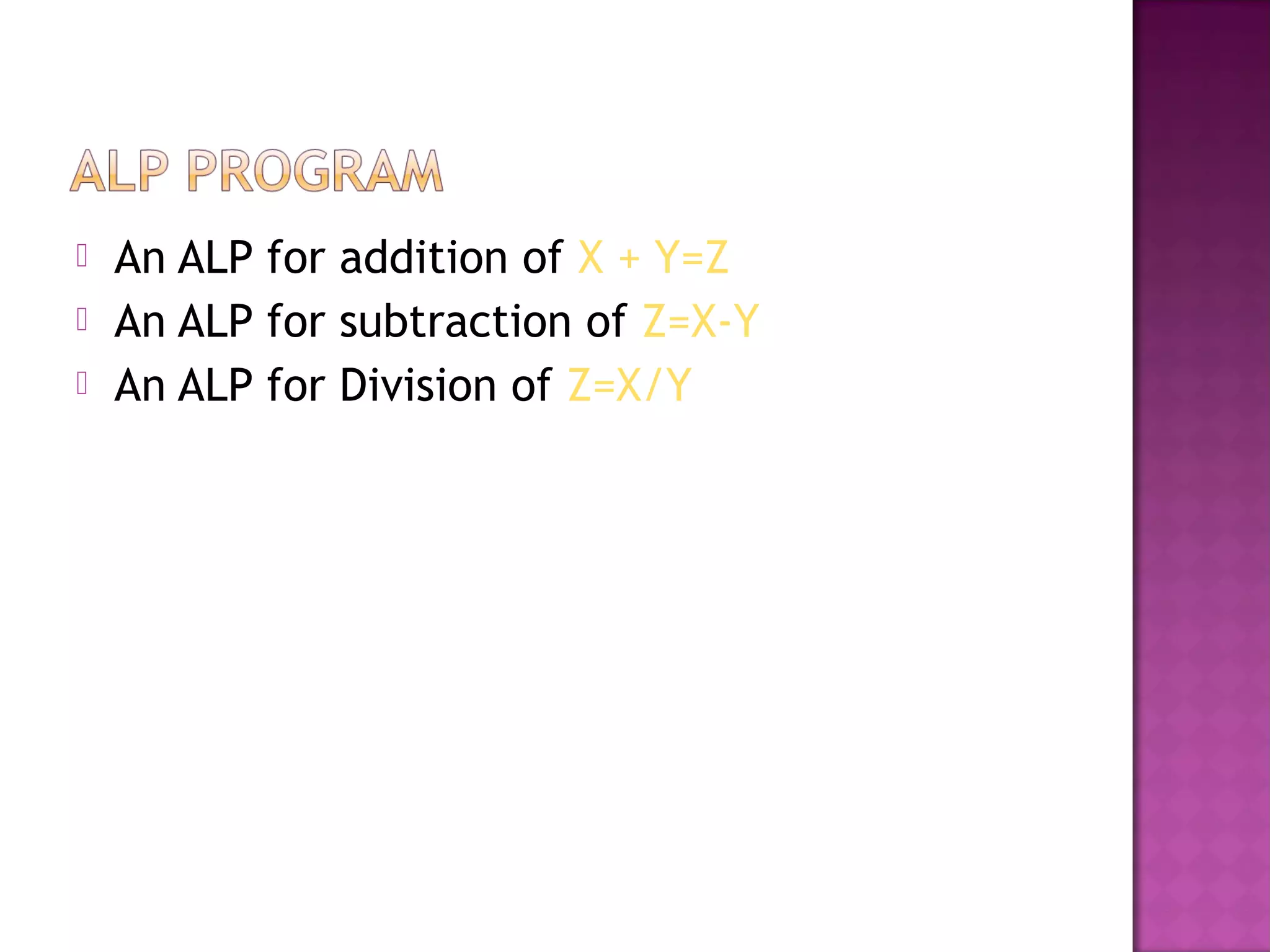The document discusses various instruction types and data transfer instructions in the 8086 microprocessor. It provides details on different categories of instructions like data transfer, arithmetic, logical, string, and program flow instructions. Examples are given for common instructions like MOV, ADD, AND, SHIFT, CALL, RET. Addressing modes, operand types, flags affected are explained for many fundamental instructions.
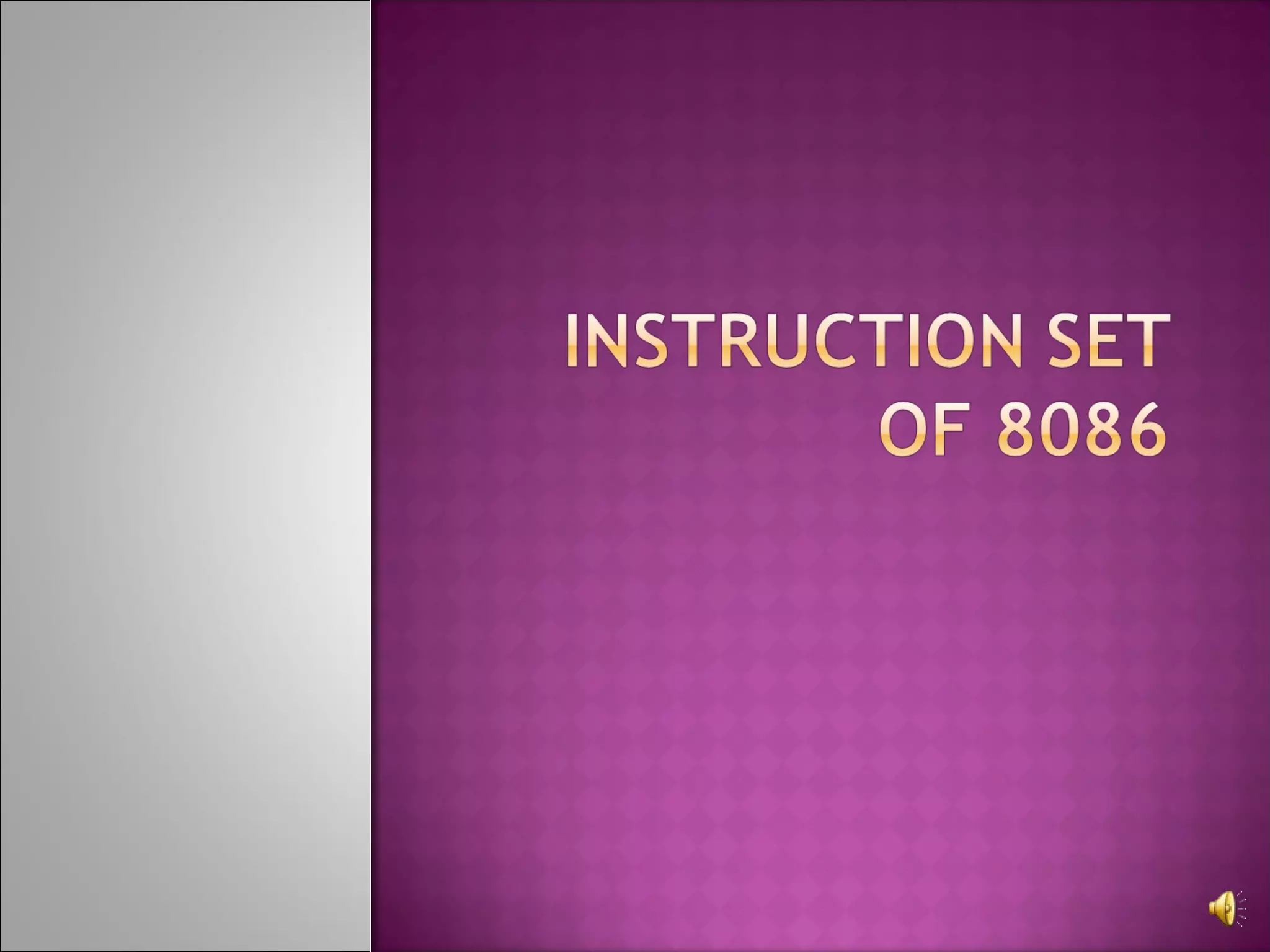
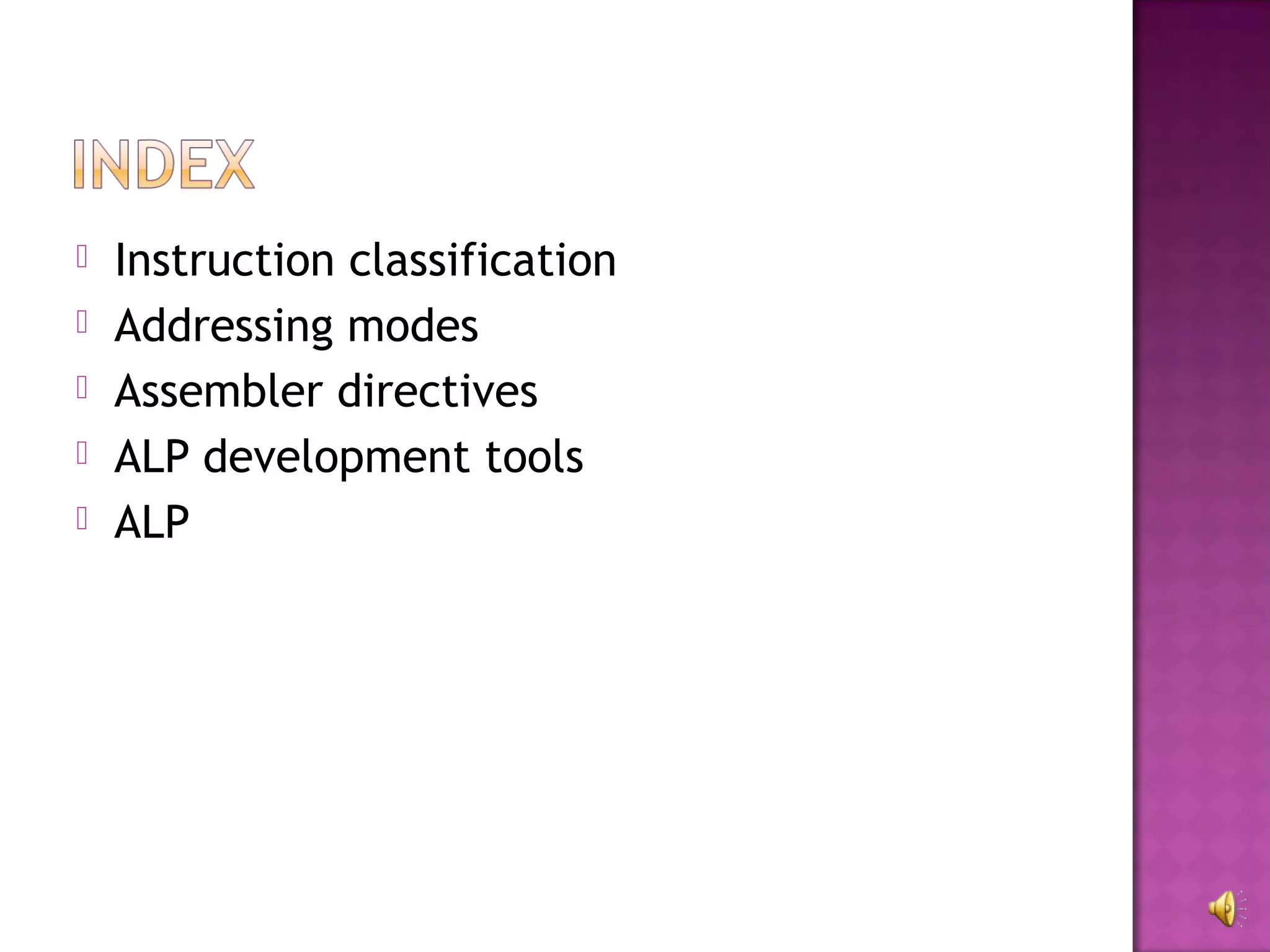
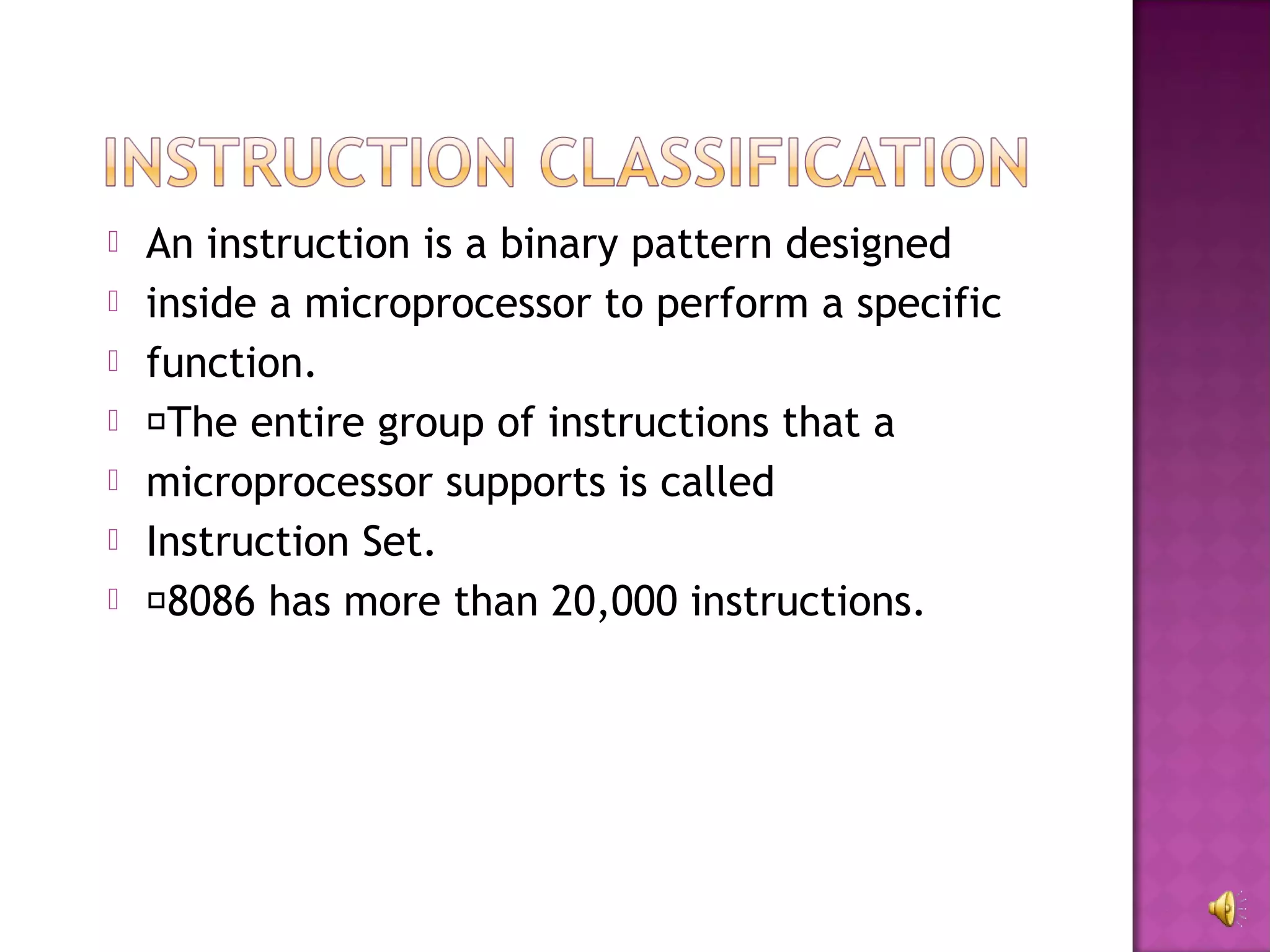


![ MOV Des, Src:
Src operand can be register, memory location or
immediate
operand.
Des can be register or memory operand.
Both Srcand Des cannot be memory location at the
same
time.
E.g.:
MOV CX, 037A H
MOV AL, BL
MOV BX, [0301 H]](https://image.slidesharecdn.com/instructionset-121211012623-phpapp01/75/Instruction-set-6-2048.jpg)
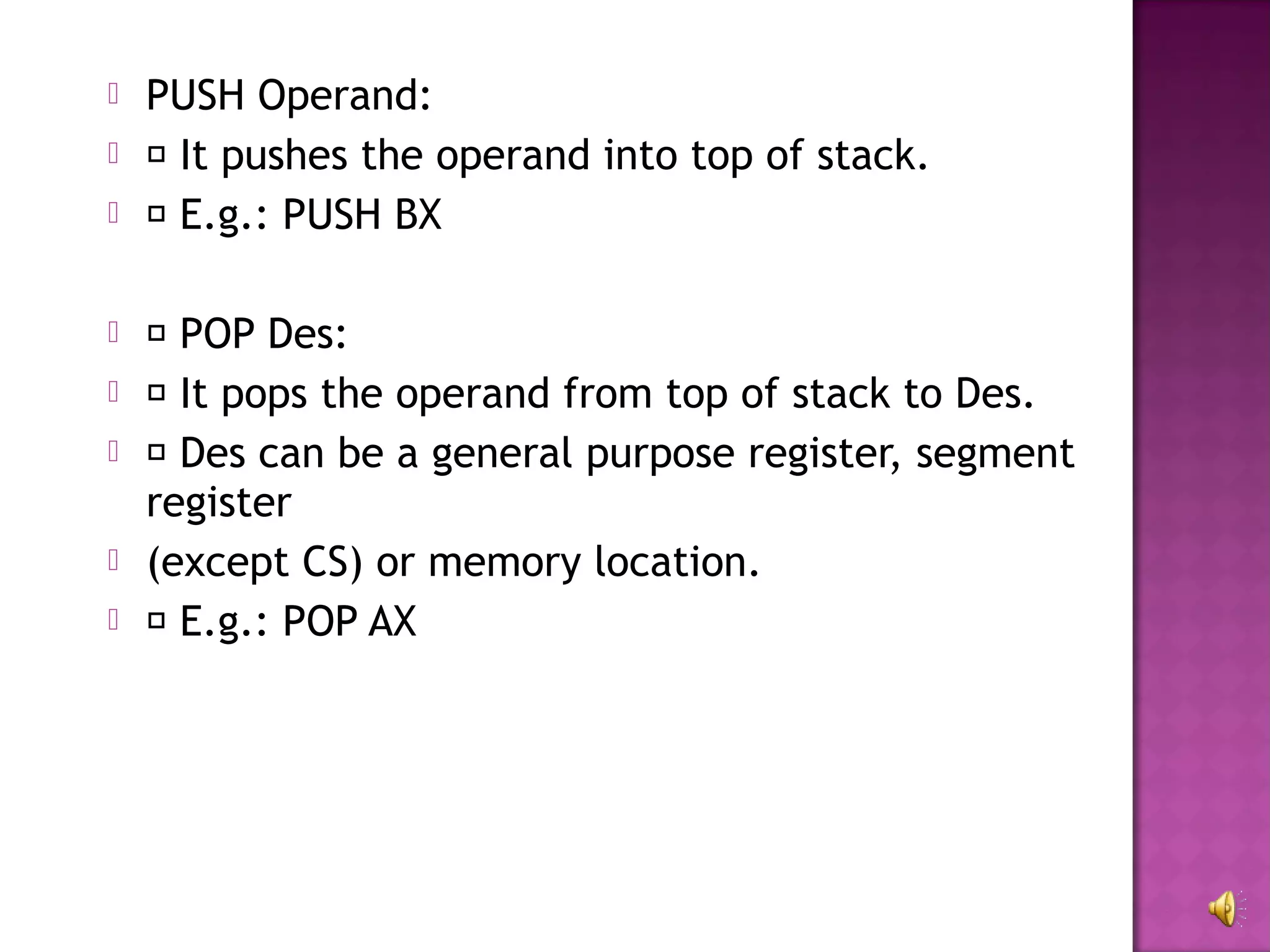
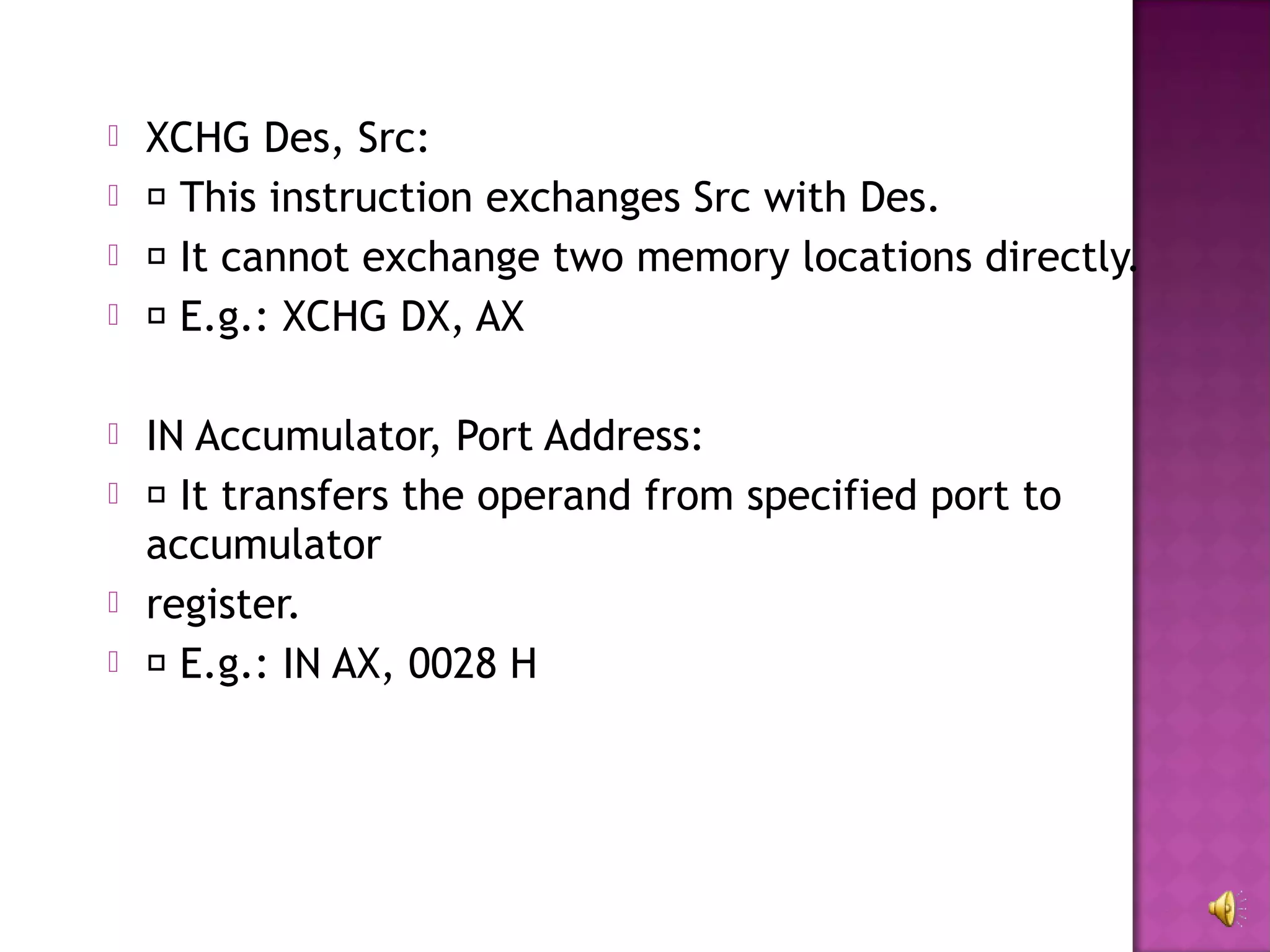
![ OUT Port Address, Accumulator:
It transfers the operand from accumulator to
specified port.
E.g.: OUT 0028 H, AX
LEA Register, Src:
It loads a 16-bit register with the offset
address of the data specified by the Src.
E.g.: LEA BX, [DI]
This instruction loads the contents of DI
(offset) into the BX register.](https://image.slidesharecdn.com/instructionset-121211012623-phpapp01/75/Instruction-set-9-2048.jpg)
![ LDS Des, Src:
It loads 32-bit pointer from memory source to
destination register and DS.
The offset is placed in the destination register and
the
segment is placed in DS.
To use this instruction the word at the lower
memory
address must contain the offset and the word at the
higher address must contain the segment.
E.g.: LDS BX, [0301 H]](https://image.slidesharecdn.com/instructionset-121211012623-phpapp01/75/Instruction-set-10-2048.jpg)
![ LES Des, Src:
It loads 32-bit pointer from memory source to
destination register and ES.
The offset is placed in the destination register and
the
segment is placed in ES.
This instruction is very similar to LDS except that it
initializes ES instead of DS.
E.g.: LES BX, [0301 H]](https://image.slidesharecdn.com/instructionset-121211012623-phpapp01/75/Instruction-set-11-2048.jpg)


![ ADD Des, Src:
It adds a byte to byte or a word to word.
It effects AF, CF, OF, PF, SF, ZF flags.
E.g.:
ADD AL, 74H
ADD DX, AX
ADD AX, [BX]
ADC Des, Src:
It adds the two operands with CF.
It effects AF, CF, OF, PF, SF, ZF flags.
E.g.:
ADC AL, 74H
ADC DX, AX
ADC AX, [BX]](https://image.slidesharecdn.com/instructionset-121211012623-phpapp01/75/Instruction-set-14-2048.jpg)
![ SUB Des, Src:
It subtracts a byte from byte or a word from word.
It effects AF, CF, OF, PF, SF, ZF flags.
For subtraction, CF acts as borrow flag.
E.g. SUB AL, 74H
SUB DX, AX
SUB AX, [BX]
SBB Des, Src:
It subtracts the two operands and also the
borrow from the result.
It effects AF, CF, OF, PF, SF, ZF flags.
E.g. SBB AL, 74H
SBB DX, AX
SBB AX, [BX]](https://image.slidesharecdn.com/instructionset-121211012623-phpapp01/75/Instruction-set-15-2048.jpg)

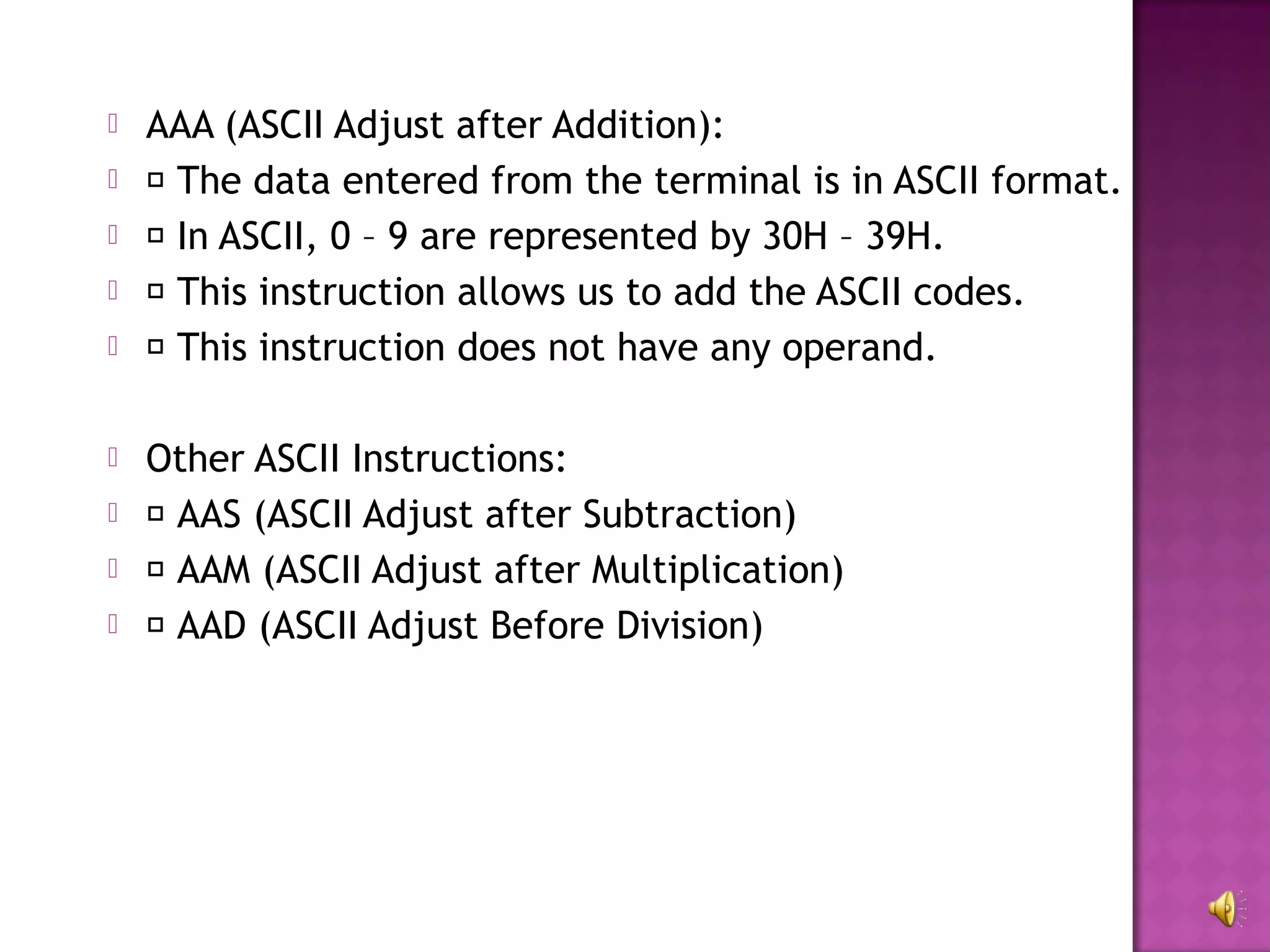




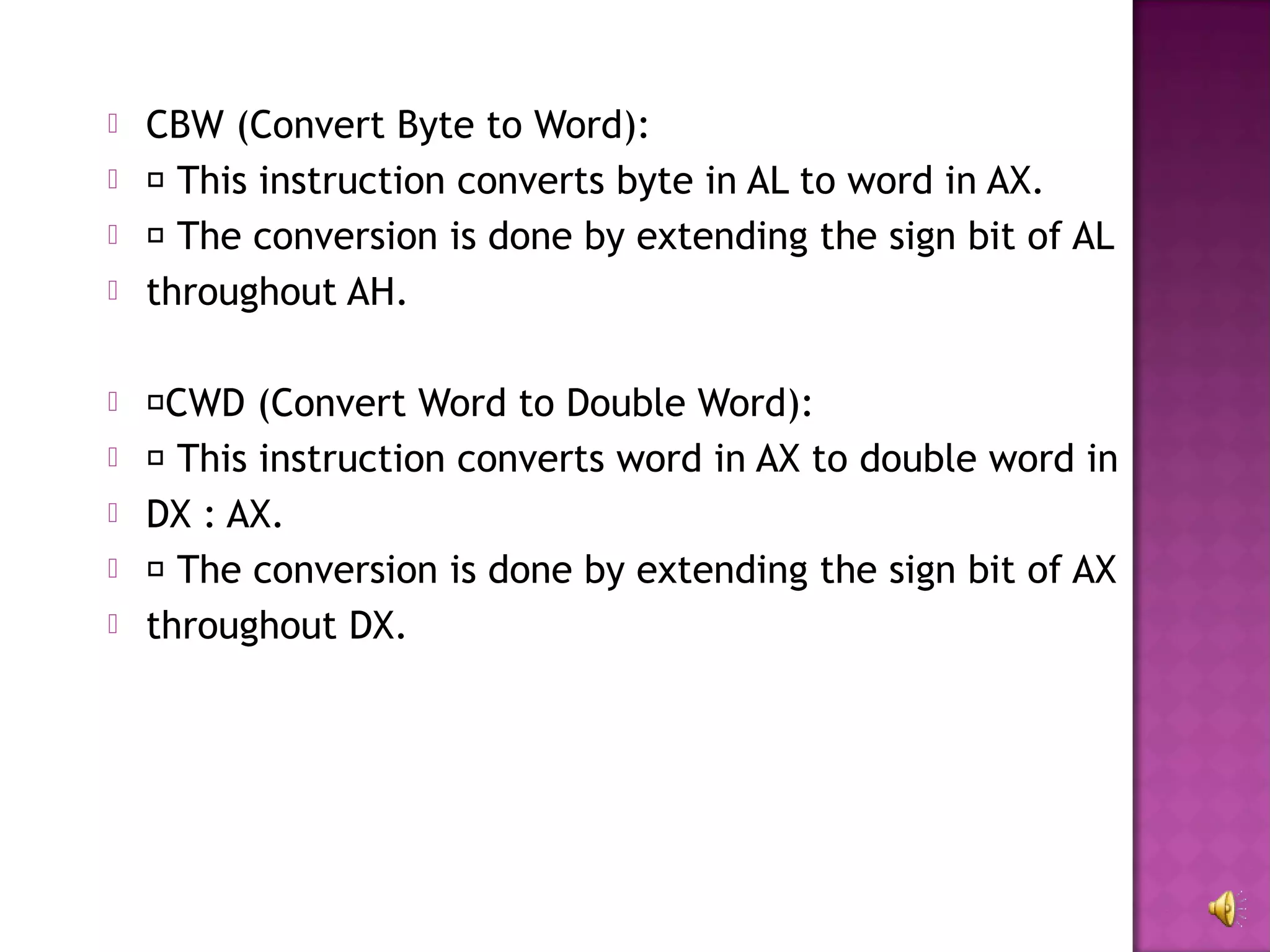

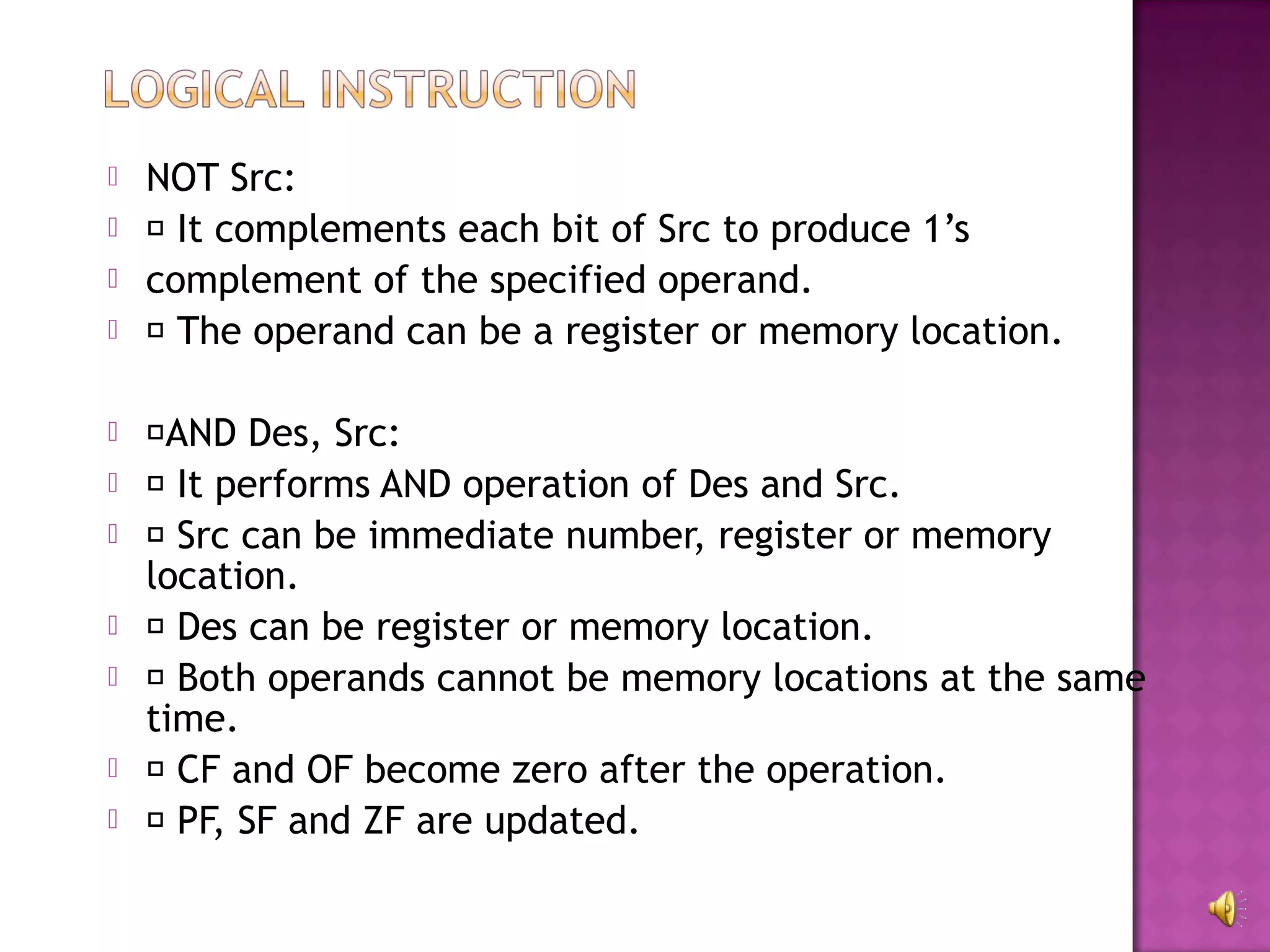
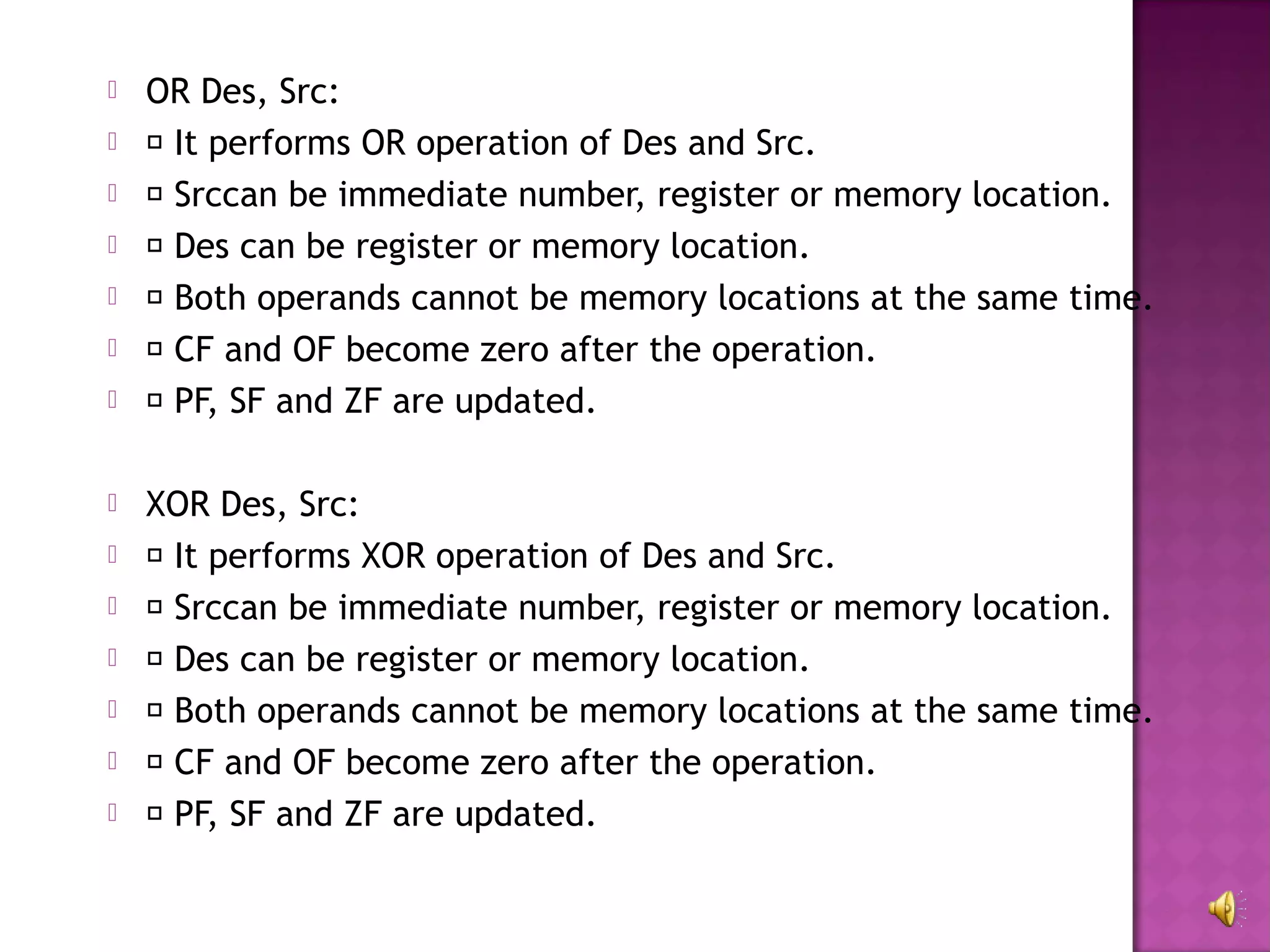
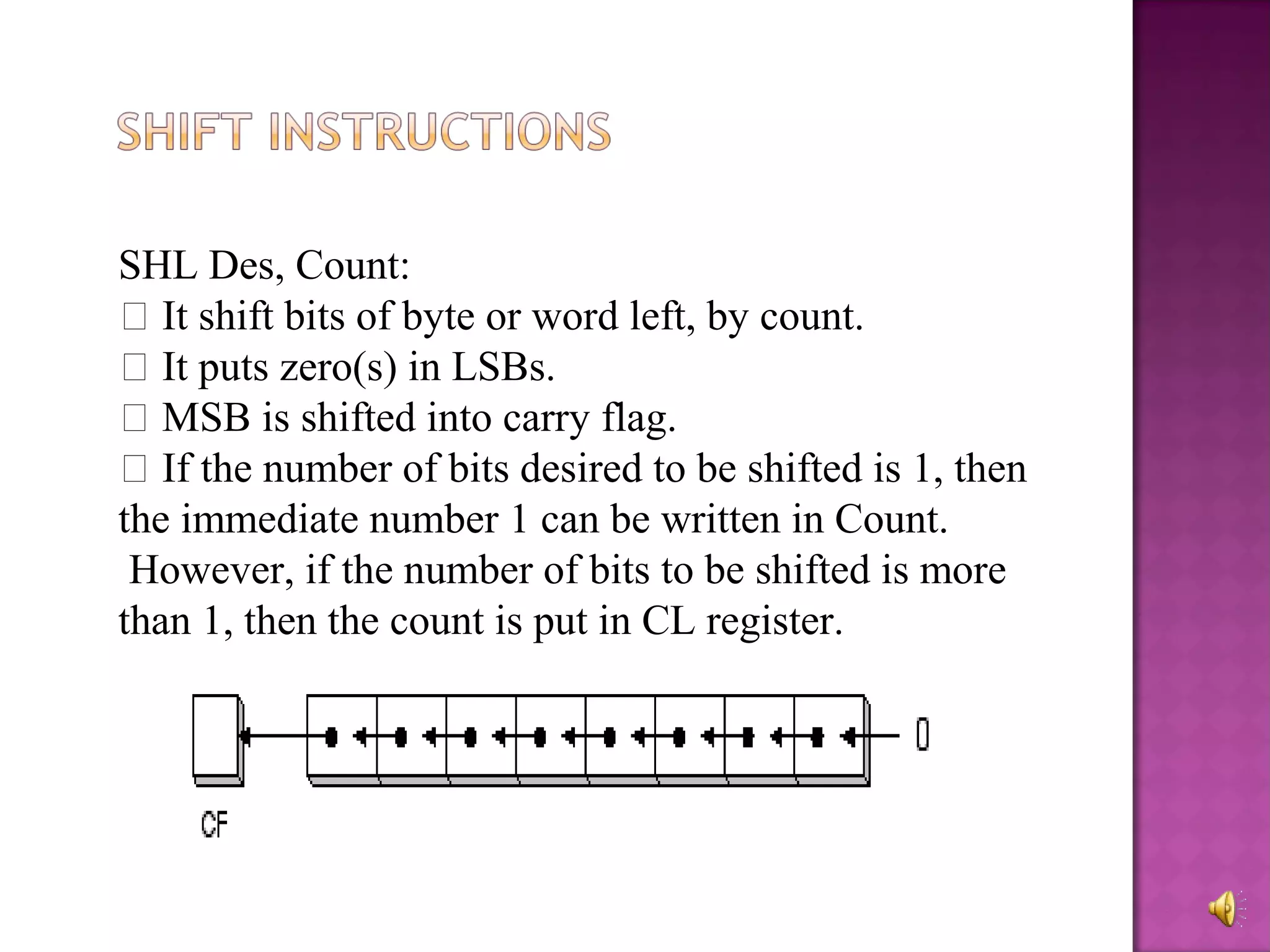


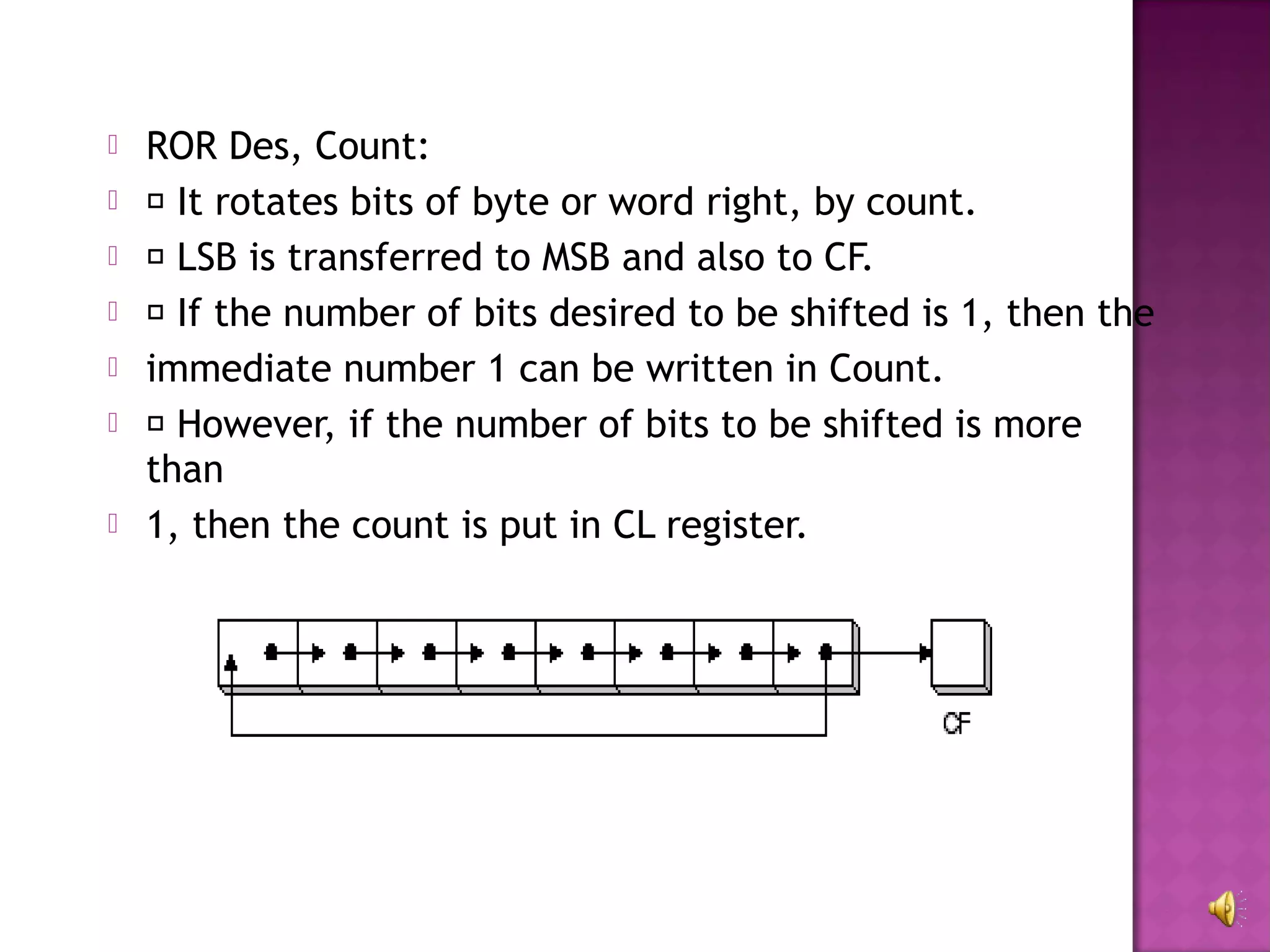

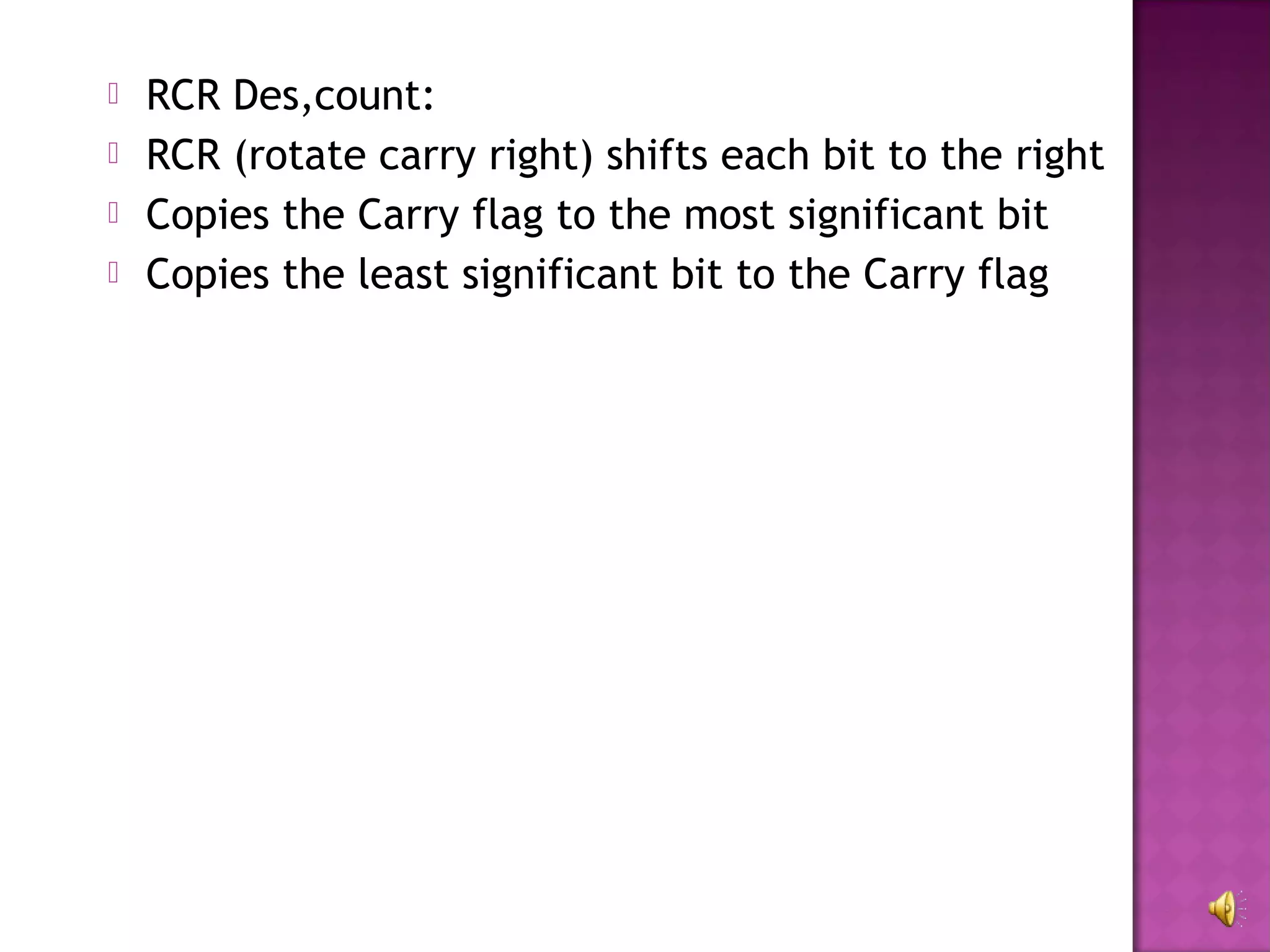



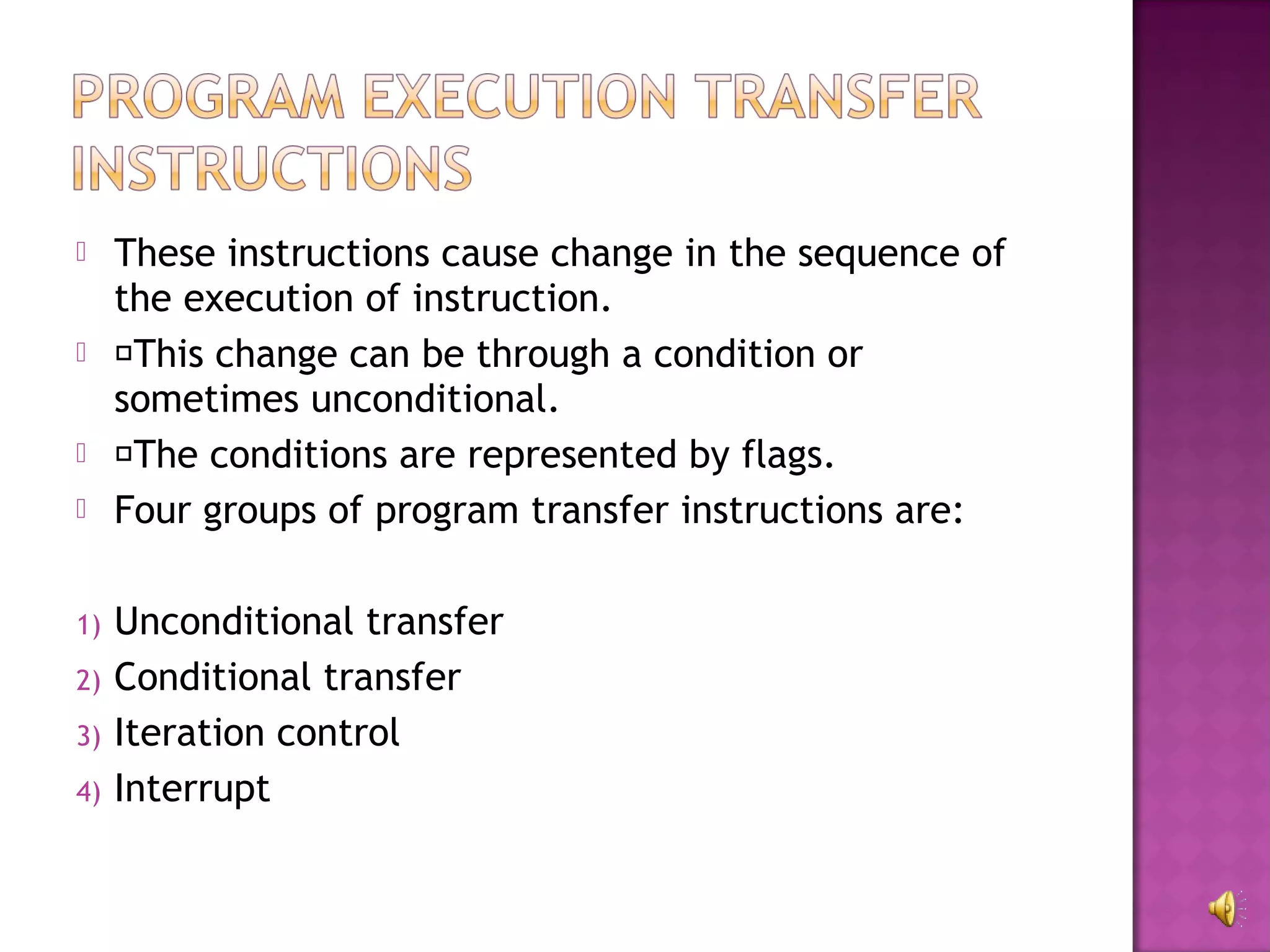
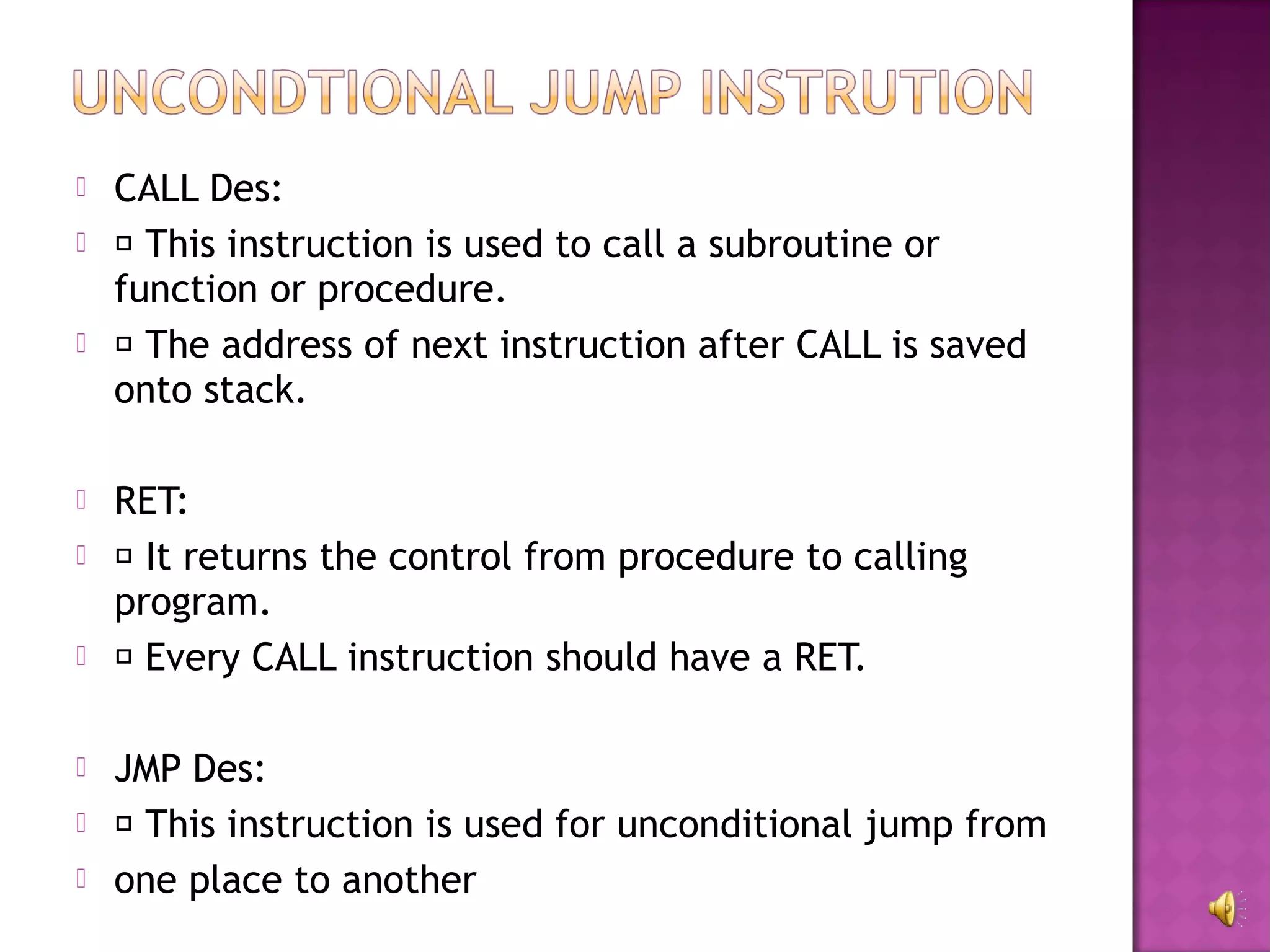
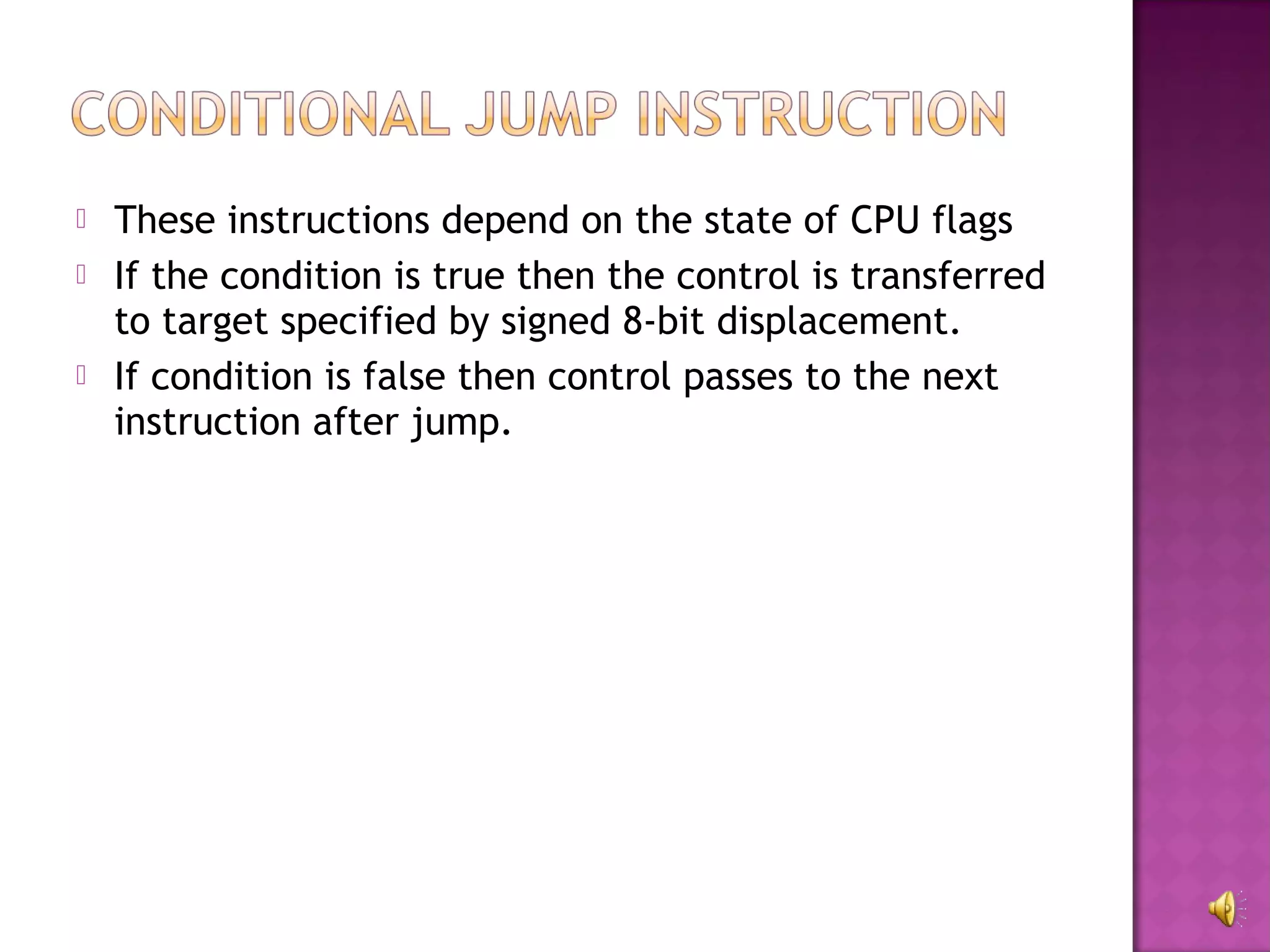
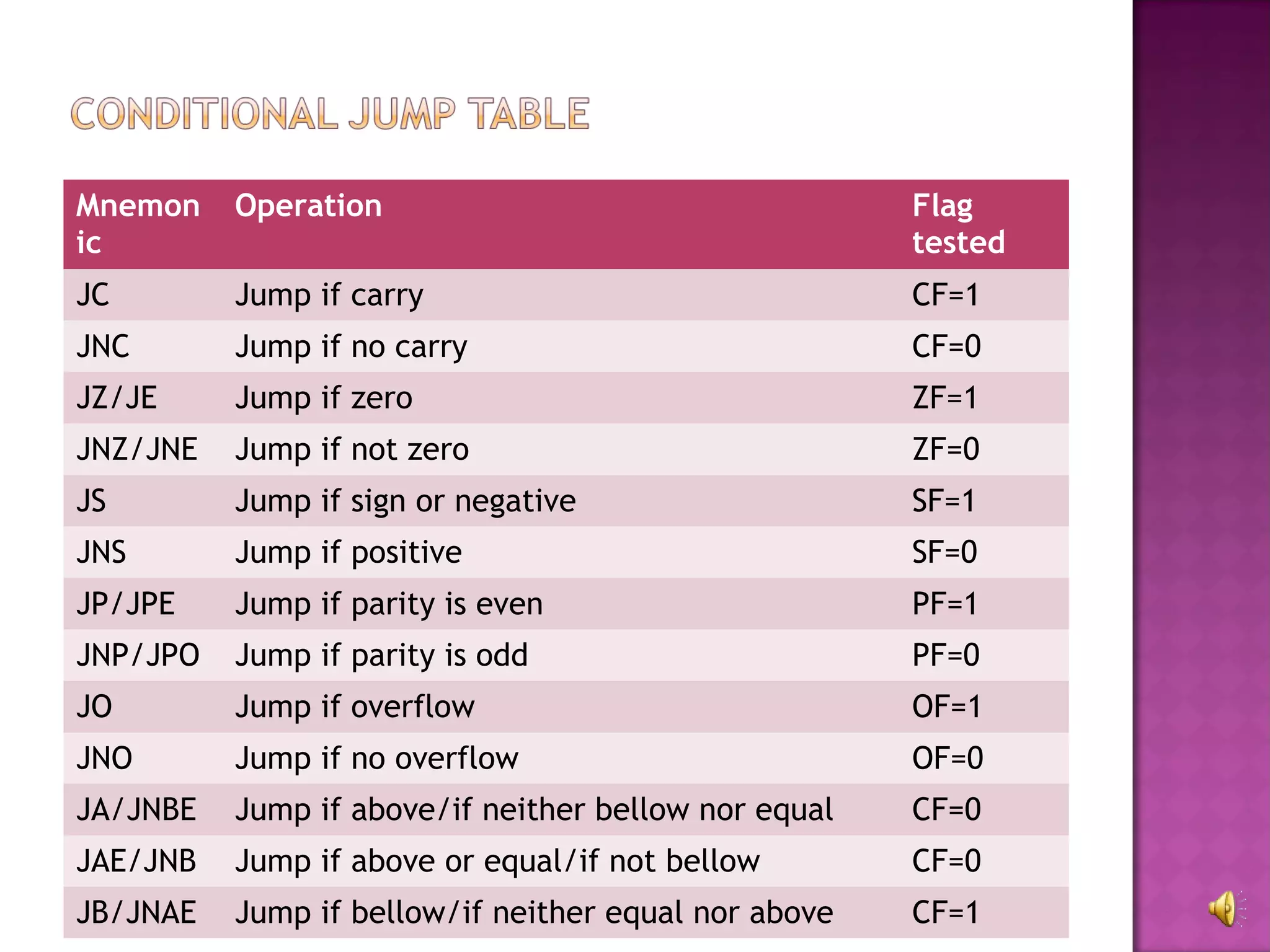
![JBE/JNA Jump if bellow or equal/if not CF=1 OR ZF=1
above
JG/JNLE Jump if greater/if neither less nor [CF=OF] OR ZF=0
equal
JGE/JNL Jump if greater or equal/if not less SF=OF=1
JL/JNGE Jump if less/if neither greater nor SF NOT EQUAL TO
equal OF
JLE/JNG Jump if less or equal/if notgreater ZF=1](https://image.slidesharecdn.com/instructionset-121211012623-phpapp01/75/Instruction-set-39-2048.jpg)
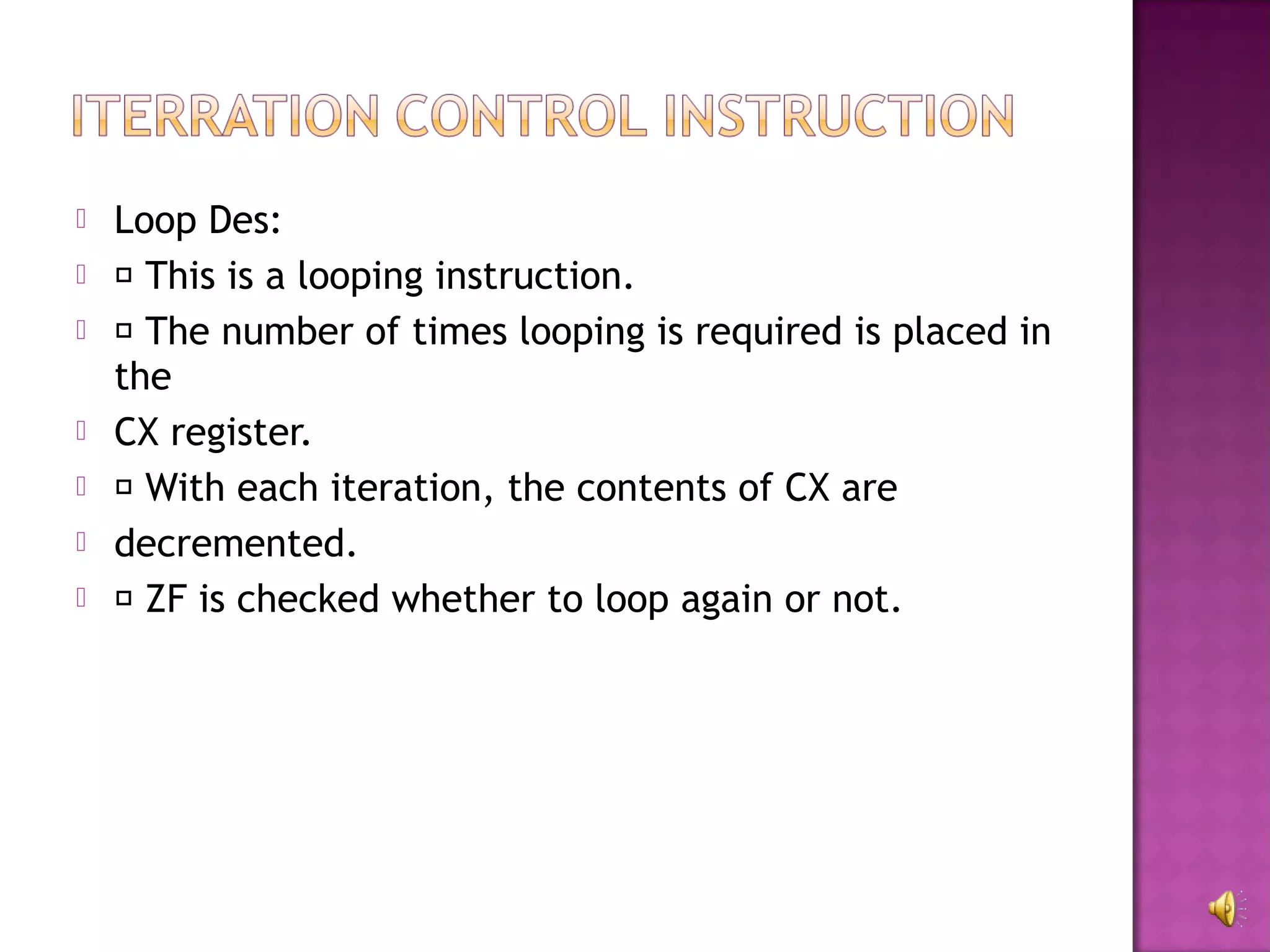
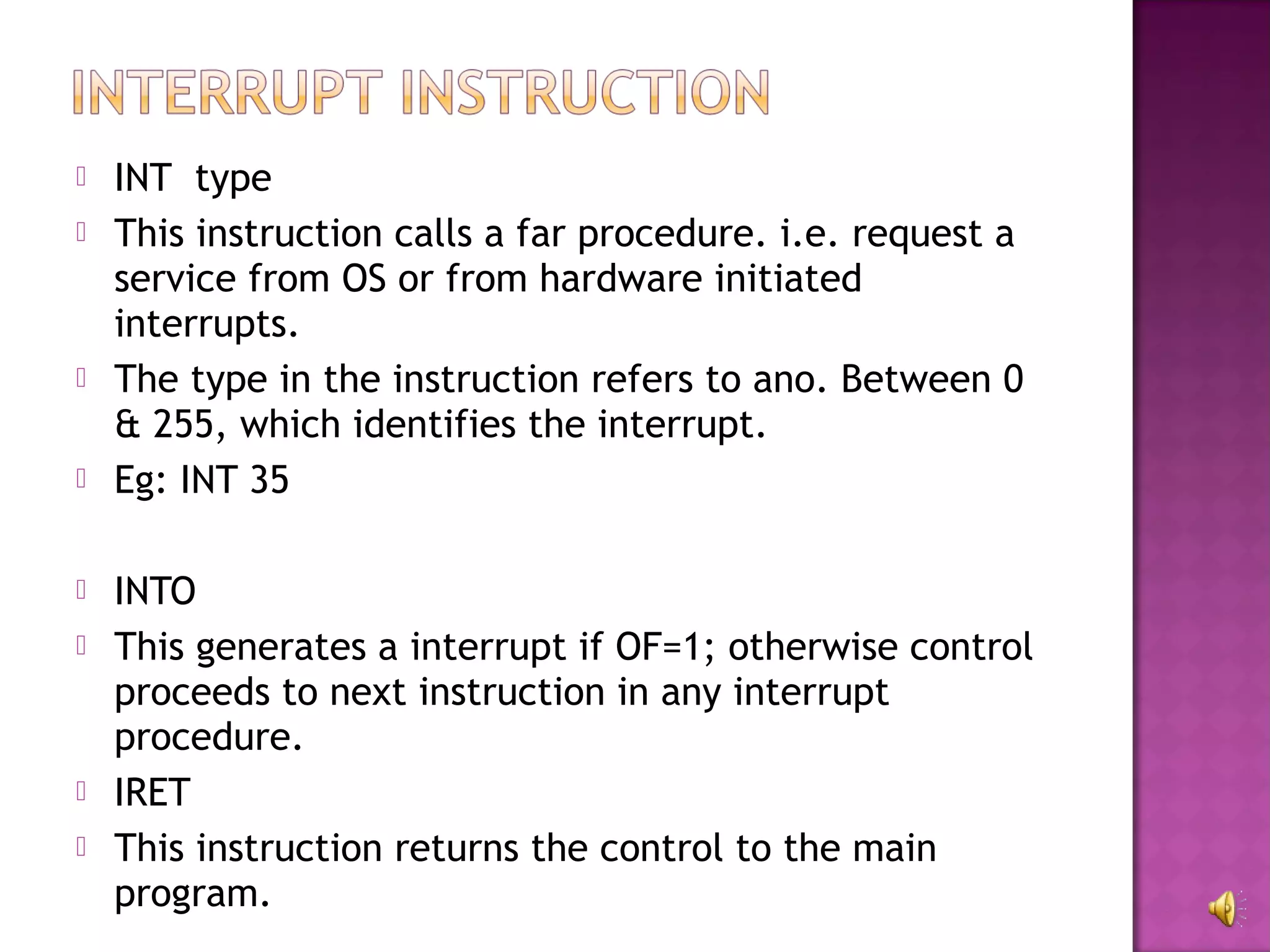

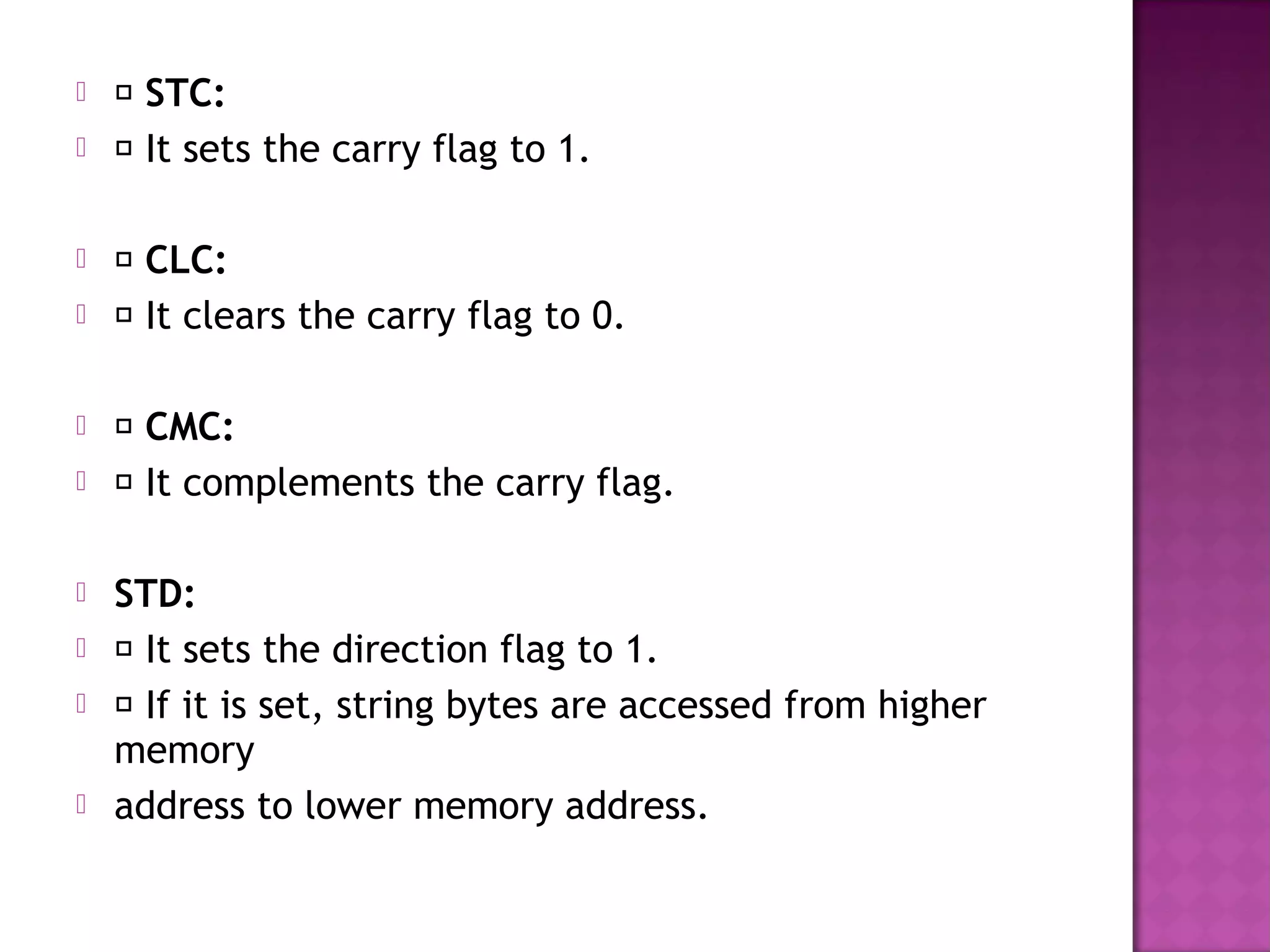
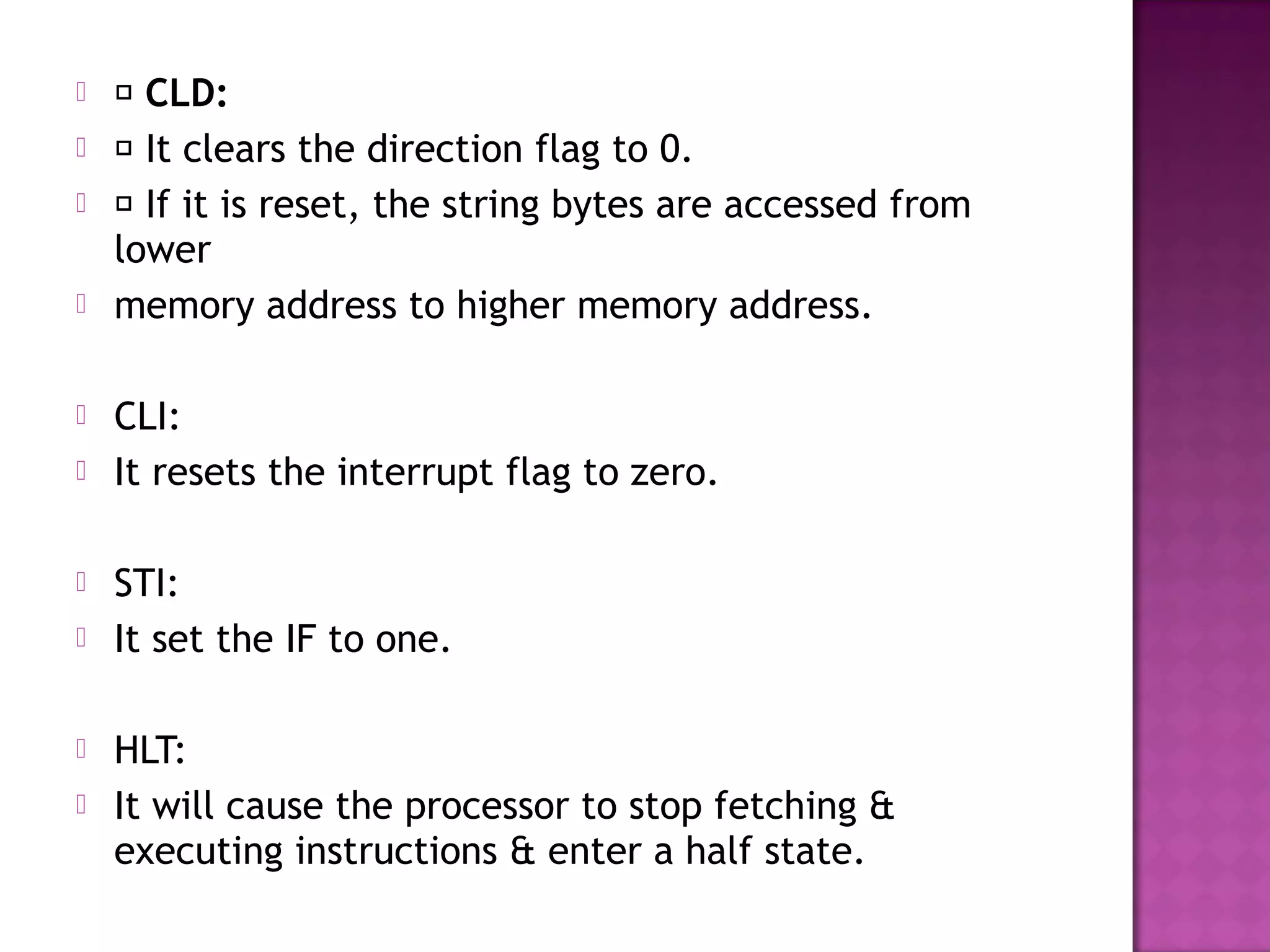

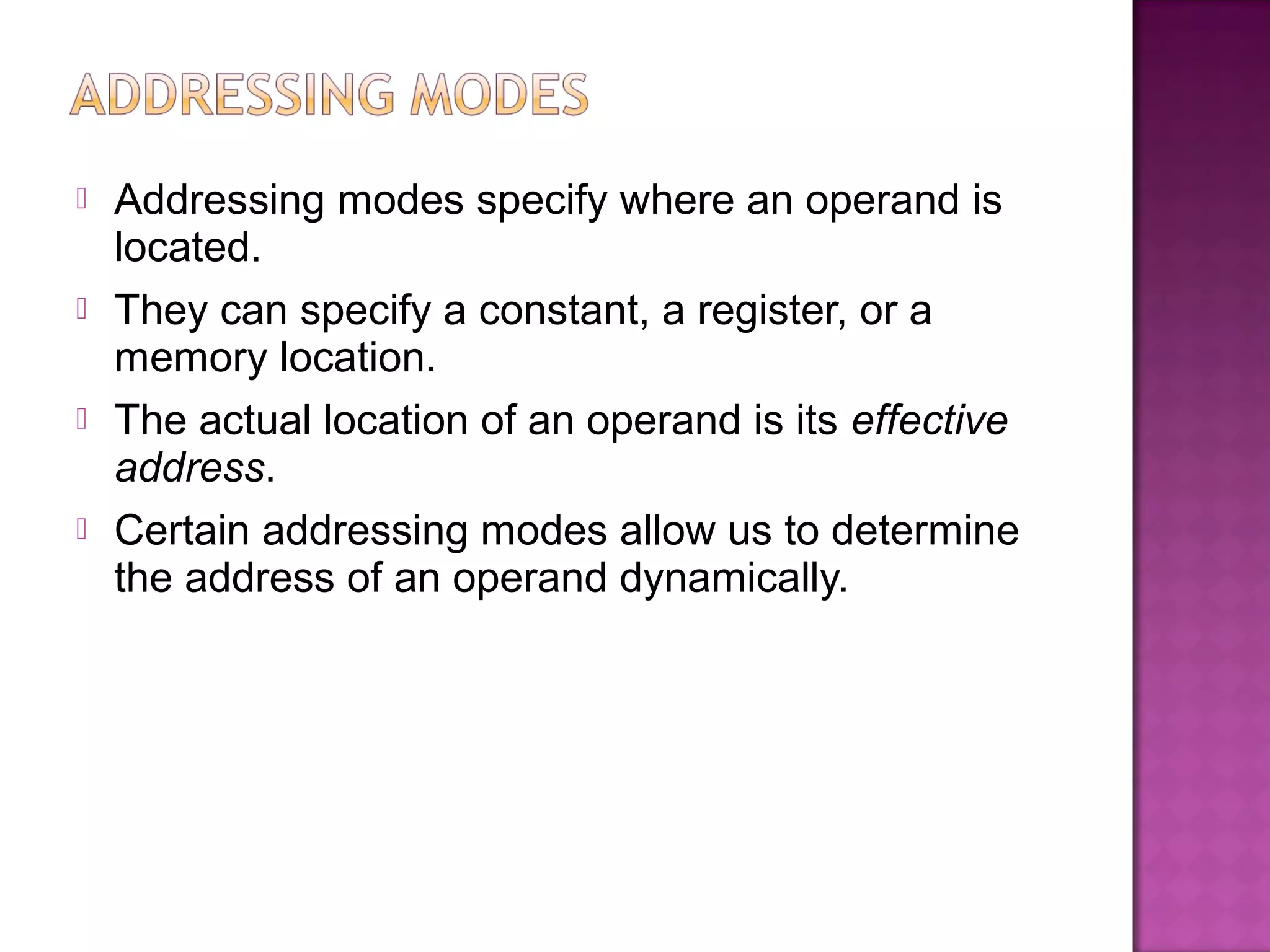

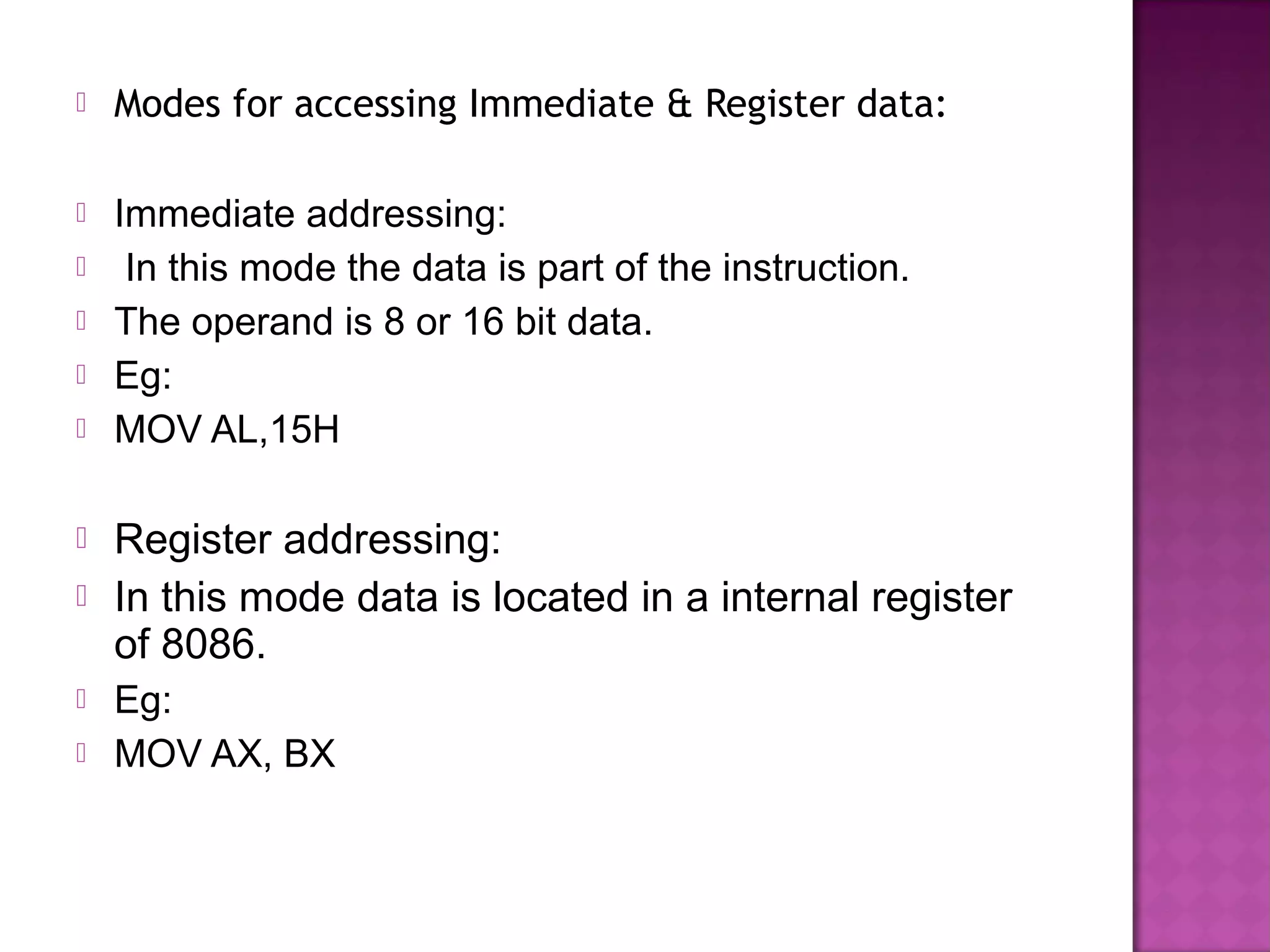
![ Modes for accessing data in memory:
Direct addressing :
In this mode the address of data is given in the
instruction.
Eg:
MOV CX,[1234H]
Register indirect :
It uses a register to store the address of the address of
the data.
EA resides either in the base register BX or base
pointer register BP, & index register can be source
index register SI or destination index register DI
Eg: MOV AX,[SI]](https://image.slidesharecdn.com/instructionset-121211012623-phpapp01/75/Instruction-set-49-2048.jpg)
![Based addressing :
In this mode tha EA address of the operand is obtained
by adding a direct or indirect displacement to the
contents of either base register BX or base pointer
register BP
Eg:
MOV [BX] + 1234h,AL
EA= BX+ 1234H PA=Segment base : EA
Indexed addressing mode:
In this the EA at the operand is obtained by adding
direct or indirect displacement to the the content of
SI or DI
Eg:
MOV AL,[SI] + 2000H
EA= SI + 2000H PA= segment base : EA](https://image.slidesharecdn.com/instructionset-121211012623-phpapp01/75/Instruction-set-50-2048.jpg)
![ Based Indexed addressing mode:
It is combination of based & indexed addressing
mode.
In this mode the EA is computed by adding a base
register (BX or BP) , an index register(SI or DI) &
displacement.
Eg:
MOV AH,[BX][SI] + 1234H
EA=BX + SI + 1234h
PA=DS:EA](https://image.slidesharecdn.com/instructionset-121211012623-phpapp01/75/Instruction-set-51-2048.jpg)
